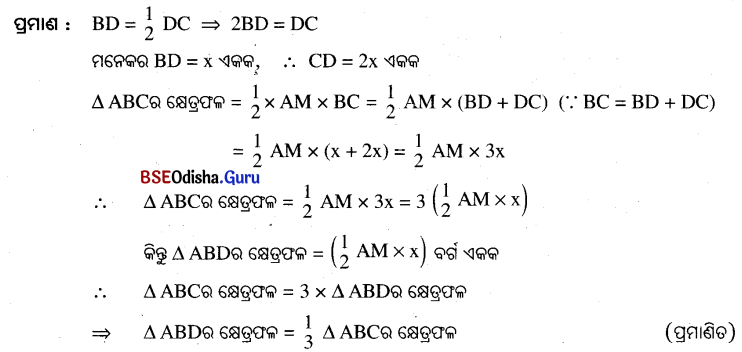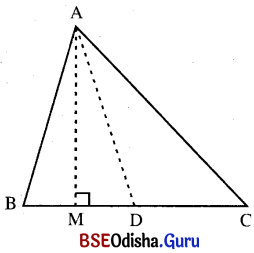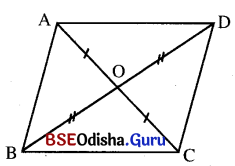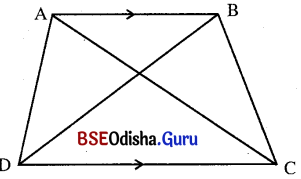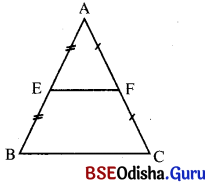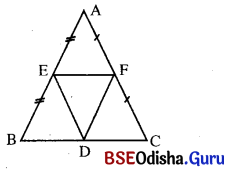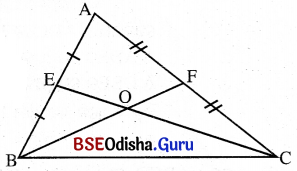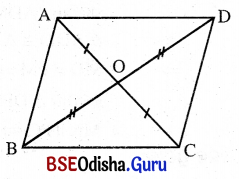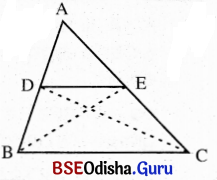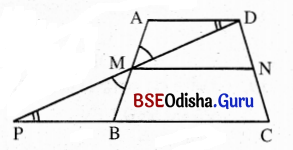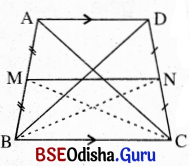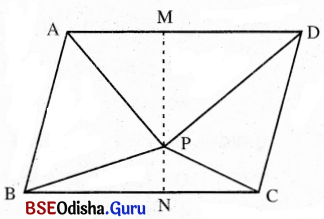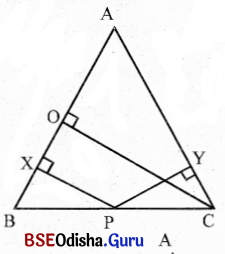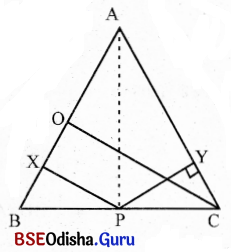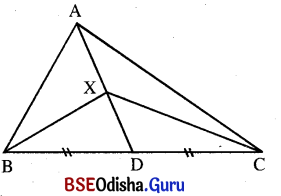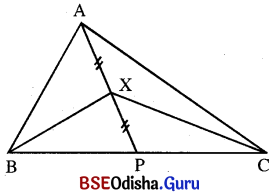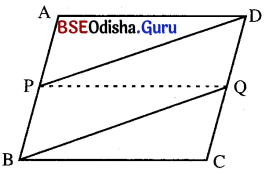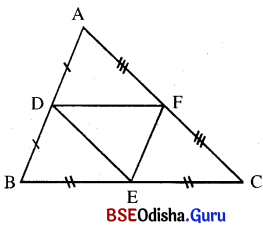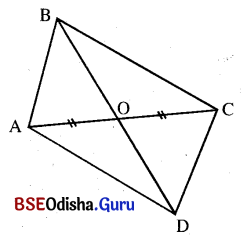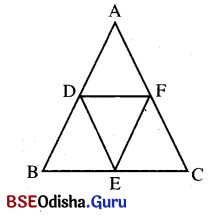Odisha State Board BSE Odisha 9th Class History Important Questions Chapter 4 ଶାନ୍ତି ପାଇଁ ପ୍ରାରମ୍ଭିକ ଉଦ୍ୟମ : ଜାତିସଂଘ Important Questions and Answers.
BSE Odisha Class 9 History Important Questions Chapter 4 ଶାନ୍ତି ପାଇଁ ପ୍ରାରମ୍ଭିକ ଉଦ୍ୟମ : ଜାତିସଂଘ
Subjective Type Questions With Answers
ଦୀର୍ଘ ଉତ୍ତରମୂଳକ ପ୍ରଶ୍ନୋତ୍ତର
୧ । ଆନ୍ତର୍ଜାତିକ ନ୍ୟାୟାଳୟର ଆଇନଗତ ଅଧିକାରକୁ କେତେ ଭାଗରେ ବିଭକ୍ତ କରାଯାଇଥିଲା ଓ କ’ଣ କ’ଣ ? ବୁଝାଇ ଲେଖ ।
Answer:
- ଆନ୍ତର୍ଜାତିକ ନ୍ୟାୟାଳୟର ଆଇନଗତ ଅଧିକାରକୁ ୨ ଭାଗରେ ବିଭକ୍ତ କରାଯାଇଥିଲା । ସେଗୁଡ଼ିକ ହେଲା- ସ୍ୱେଚ୍ଛାକୃତ ଓ ବାଧ୍ୟତାମୂଳକ ।
- ଯେତେବେଳେ ଦୁଇ ବା ତତୋଽଧ୍ଵକ ରାଷ୍ଟ୍ର ସେମାନଙ୍କ ମଧ୍ୟରେ ଥିବା ବିବାଦକୁ ସମାଧାନ କରିବୀପାଇଁ ନ୍ୟାୟାଳୟର ଉପସସ୍ଥ କରୁଥିଲେ ତାହା ନ୍ୟାୟାଳୟର ସ୍ୱେଚ୍ଛାକୃତ ଅଧ୍ କାର ପରିସର ଅନ୍ତର୍ଭୁକ୍ତ ହେଉଥିଲା ।
- ଜାତି ସଂଘର ସଭ୍ୟ ହେବା ସମୟରେ କେତେକ ରାଷ୍ଟ୍ର ସେମାନଙ୍କର ବିବାଦର ନିଷ୍ପତ୍ତି ପାଇଁ ଆନ୍ତର୍ଜାତିକ ନ୍ୟାୟାଳୟର ଉପସସ୍ଥ କରିବେ ବୋଲି ଅଙ୍ଗୀକାରବଦ୍ଧ ହୋଇଥିଲେ ।
- ଏପ୍ରକାର ବିବାଦର ସମାଧାନ କରିବା ନ୍ୟାୟାଳୟର ବାଧ୍ୟତାଧୂଳକ ଅଧ୍ କାର ପରିସର ଅନ୍ତର୍ଭୁକ୍ତ ଥିଲା ।
୨ । ଆନ୍ତର୍ଜାତିକ ଶ୍ରମ ସଙ୍ଗଠନର କେତୋଟି ଅଙ୍ଗ ଥିଲା ଓ କ’ଣ କ’ଣ ? ବୁଝାଇ ଲେଖ ।
Answer:
- ଆନ୍ତର୍ଜାତିକ ଶ୍ରମ ସଙ୍ଗଠନର ୩ଟି ଅଙ୍ଗ ଥିଲା । ସେଗୁଡ଼ିକ ହେଲା – ସାଧାରଣ ଆନ୍ତର୍ଜାତିକ ଶ୍ରମ କାର୍ଯ୍ୟାଳୟ ।
- ସାଧାରଣ ସମ୍ମିଳନୀରେ ପ୍ରତ୍ୟେକ ସଦସ୍ୟ – ରାଷ୍ଟ୍ରର ଚାରି ଜଣ ପ୍ରତି ନିଜ୍ ଥିଲେ । ସେମାନଙ୍କ ମଧ୍ୟରୁ ଦୁଇଜଣ ସରକାରଙ୍କଦ୍ୱାରା, ଜଣେ ଶିଳ୍ପପତିଙ୍କଦ୍ବାରା ଓ ଆନ୍ତର୍ଜାତିକ ଶ୍ରମ ହେଉଥିଲେ ।
- ସାଧାରଣ ସମ୍ମିଳନୀର କୌଣସି ବୈଧାନିକ କ୍ଷମତା ନ ଥିଲା । ଏହା କେବଳ ଶ୍ରମିକମାନଙ୍କ ଅବସ୍ଥାର କେତେକ ତ୍ରୁଟି ଓ ସେଗୁଡ଼ିକୁ ସୁଧାରିବାପାଇଁ ଦୃଷ୍ଟି ଆକର୍ଷଣ କରିବା ଉନ୍ନତି କରିବା ଉଦ୍ଦେଶ୍ୟରେ ଆବଶ୍ୟକ ଚିଠା ପ୍ରସ୍ତୁତ କରୁଥିଲା ।
- ଶାସନ ନିୟନ୍ତ୍ରକ ଦଳରେ ୩୨ ଜଣ ସଦସ୍ୟ ଥିଲେ । ସେଥିରୁ ୧୬ ଜଣ ସଦସ୍ୟ ରାଷ୍ଟ୍ରର ଶ୍ରମିକମାନଙ୍କଦ୍ୱ।ରା ମନୋନୀତ ଓ ଆଠଜଣ ଶ୍ରମିକମାନଙ୍କର ପ୍ରତିନିଧ୍ କରୁଥିଲେ । ଆନ୍ତର୍ଜାତିକ ଶ୍ରମ କାର୍ଯ୍ୟାଳୟର ନିର୍ଦ୍ଦେଶକଙ୍କ ନିର୍ବାଚନ ଏହାର ମୁଖ୍ୟ କାର୍ଯ୍ୟ ଥିଲା ।
- ଶ୍ରମିକମାନଙ୍କର ଉନ୍ନତି ସମ୍ପର୍କରେ ତଥ୍ୟ ସଂଗ୍ରହ ଓ ପ୍ରସାରଣ ପାଇଁ ଉଦ୍ୟମ କରିବା ଆନ୍ତର୍ଜାତିକ ଶ୍ରମ କାର୍ଯ୍ୟାଳୟର ମୁଖ୍ୟ କାର୍ଯ୍ୟ ଥିଲା । ଏହି କାର୍ଯ୍ୟାଳୟ ନିଜର ସମ୍ବାଦପତ୍ର ଓ ପତ୍ରିକା ପ୍ରକାଶ କରୁଥିଲେ ।
୩ । ଜାତିସଂଘର ବିଫଳତାର କାରଣଗୁଡ଼ିକ ଉଲେ୍ଳ କର ।
କିମ୍ବା, କେଉଁଥ୍ପାଇଁ ଜାତିସଂଘ ତା’ର କାର୍ଯ୍ୟରେ ବିଫଳ ହୋଇଥିଲା ?
Answer:
ଜାତିସଂଘର ବିଫଳତା ପାଇଁ ନିମ୍ନଲିଖିତ କାରଣଗୁଡ଼ିକ ଦାୟୀ ଥିଲା ।
- ପ୍ୟାରିସ୍ ଶାନ୍ତି ଚୁକ୍ତି ସହିତ ସଂଯୋଗ – ଜାତିସଂଘରଣ୍ମକୁ ପ୍ୟ।ରିସ୍ଠ।ରେ ସ୍ୱାକ୍ଷରିତ ହୋଇଥ୍ ଶାନ୍ତ ଚୁକ୍ତି ସହିତ ସଂଲଗ୍ନ କରି ଦିଆଯାଇଥିଲା । ଚୁକ୍ତି ର ସର୍ଭଗୁଡ଼ିକ ବିଜିତ ରାଷ୍ଟ୍ରମାନଙ୍କ ପ୍ରତି ଅତ୍ୟନ୍ତ କଠୋର ଥିଲା । ଜାତିସଂଘର ଆରମ୍ଭରେ ବିଜିତ ରାଷ୍ଟ୍ରମାନଙ୍କୁ ସଭ୍ୟପଦ ଦିଆନଯିବାରୁ ସେମାନେ ଜାତିସଂଘର କେଳେ ମନେକରିବା ସହିତ ଜାତିସଂଘକୁ ଘୃଣା କଲେ ଓ ସମର୍ଥନ ଦେବାପାଇଁ କୁଣ୍ଠାବୋଧ କଲେ ।
- ଯୁକ୍ତରାଷ୍ଟ୍ର ଆମେରିକାର ଅନୁପସ୍ଥିତି – ଯୁକ୍ତରାଷ୍ଟ୍ର ଆମେରିକାର ସିନେଟ୍ ପ୍ୟ।ରିସ୍ ଜାତିସଂଘର ସଭ୍ୟ ହୋଇପାରିଲା ନାହିଁ ଏବଂ କେତେକ ଦେଶକୁ ଜାତିସଂଘ ସଭପ୍ୟଦରୁ ଇସ୍ତଫା ଦେବାପାଇଁ ଉତ୍ସାହିତ କଲା ।
- ରାଷ୍ଟ୍ରମାନଙ୍କର ସ୍ଵାର୍ଥପର ମନୋଭାବ – ଜାତିସଂଘର ସଦସ୍ୟ ରାଷ୍ଟ୍ରମାନ ଜାତିସଂଘ ବା ସାରା ବିଶ୍ଵର ସ୍ଵାର୍ଥ ଅପେକ୍ଷା ନିଜର ସ୍ୱାର୍ଥକୁ ଅଧିକ ଗୁରୁତ୍ଵ ଦେବାରୁ ପୃଥିବୀରେ ସ୍ଥାୟୀ ଶାନ୍ତି ପ୍ରତିଷ୍ଠା ସମ୍ଭବ ହେଲା ନାହିଁ ।
- ସାର୍ବଜନୀନତାର ଅଭାବ – କୌଣସି ସମୟରେ ସମସ୍ତ ବୃହତ୍ ରାଷ୍ଟ୍ର ଜାତିସଂଘର ସଦସ୍ୟ ହୋଇ ନଥିଲେ । ସାର୍ବଜନୀନତାର ଅଭାବ ଫଳରେ ଜାତି ସଂଘ ଦୁର୍ବଳ ହୋଇପଡ଼ିଲା ଏବଂ ଏହାର ନିଷ୍ପତ୍ତିଗୁଡ଼ିକ କାର୍ଯ୍ୟକାରୀ ହୋଇପାରିଲା ନାହିଁ ।
- ସାମ୍ବିଧାନିକ ତ୍ରୁଟି – ସାମ୍ବିଧାନିକ ତ୍ରୁଟି ଯୋଗୁଁ ଜାତିସଂଘ ପୃଥିବୀରେ ସ୍ଥାୟୀ ଶାନ୍ତି ପ୍ରତିଷ୍ଠା କରିବା ଦିଗରେ ଅସଫଳ ହୋଇଥିଲା । ଜାତିସଂଘ ଯୁଦ୍ଧକୁ ଅସିଦ୍ଧ ଘୋଷଣା କରି ନ ଥିବା ହେତୁ ଅନେକ ସଦସ୍ୟ ବିବାଦୀୟ କଲେ ।
- ଆର୍ଥିକ ମାନ୍ଦାବସ୍ଥା – ୧୯୩୦ ମସିହାର ଆର୍ଥିକ ମାନ୍ଦାବସ୍ଥା ଯୋଗୁଁ ରାଷ୍ଟ୍ରଗୁଡ଼ିକ ତୋଷଣ ଓ ଅଣହସ୍ତକ୍ଷେପ ନୀତି ଅବଲମ୍ବନ କରି ଅହେତୁକ ଆକ୍ରମଣ ପ୍ରତି ନୀରବ ସମ୍ମତି ଜଣାଇଥିଲେ ।
ମୋଟାମୋଟି ଦେଖିବାକୁ ଗଲେ ଯୁଦ୍ଧର ଆଶଙ୍କାକୁ ହ୍ରାସ କରି ସ୍ଥାୟୀ ଶାନ୍ତି ପ୍ରତିଷ୍ଠା କରିବା ଦିଗରେ ଜାତିସଂଘ ସଫଳ ହୋଇପାରି ନ ଥିଲା ।
୪। ଜାତିସଂଘର ସଚିବାଳୟର କାର୍ଯ୍ୟାବଳୀ ସଂକ୍ଷେପରେ ଲେଖ ।
Answer:
- ଜାତି ସଂଘ ପରିଚାଳନା ପାଇଁ ଏକ ସଚିବାଳୟର ବ୍ୟବସ୍ଥା କରାଯାଇଥିଲା । ଏହାର ମୁଖ୍ୟଙ୍କୁ ସେକ୍ରେଟେରୀ ଜେନେରାଲ୍ ବା ମହାସଚିବ କୁହାଯାଉଥିଲା ।
- ମହାସଚିବଙ୍କୁ କାର୍ଯ୍ୟରେ ସାହାଯ୍ୟ କରିବାପାଇଁ ବିଭିନ୍ନ ଦେଶରୁ ପ୍ରାୟ ୭୫୦ ଜଣ ବ୍ୟକ୍ତି ସଚିବାଳୟରେ କାର୍ଯ୍ୟ କରିବାପାଇଁ ନିଯୁକ୍ତି ପାଇଥିଲେ ।
- ସଚିବାଳୟରେ ୧୧ଟି ବିଭାଗ କାର୍ଯ୍ୟ କରୁଥିଲା ଓ ପ୍ରତ୍ୟେକ ବିଭାଗ ଜଣେ ସେକ୍ରେଟାରୀଙ୍କ ତତ୍ତ୍ୱାବଧାନରେ କାର୍ଯ୍ୟ କରୁଥିଲା ।
- ସଭା ଓ ପରିଷଦରେ ବିଚାର ଆଲୋଚନା ପାଇଁ ବିଭିନ୍ନ ବିଷୟଗୁଡ଼ିକର ତାଲିକା ପ୍ରସ୍ତୁତ କରିବା ଏବଂ ସେଗୁଡ଼ିକ ସମ୍ପର୍କରେ ଆବଶ୍ୟକ ସୂଚନା ଯୋଗାଇବା, ଗୃହୀତ ହୋଇଥିବା ପ୍ରସ୍ତାବଗୁଡ଼ିକୁ କାର୍ଯ୍ୟକାରୀ କରିବା, ସଭାରେ ହୋଇଥିବା ଆଲୋଚନାର ବିବରଣୀ ଓ ରାଷ୍ଟ୍ରଗୁଡ଼ିକ ମଧ୍ୟରେ ହୋଇଥିବା ରାଜିନାମା ବା ସନ୍ଧିଗୁଡ଼ିକ ପ୍ରକାଶ କରିବା ପ୍ରଭୃତି ସଚିବାଳୟର ପ୍ରଧାନ କାର୍ଯ୍ୟ ଥିଲା ।
- ସେକ୍ରେଟାରୀ ଜେନେରାଲ୍ ଜାତିସଂଘର ସମସ୍ତ ଶାସନୀୟ ଅଙ୍ଗଗୁଡ଼ିକର କାର୍ଯ୍ୟର ସମନ୍ଵୟକାରୀ ଥିଲେ ।
![]()
୫। ଜାତିସଂଘର ବିଭିନ୍ନ ଅଙ୍ଗଗୁଡ଼ିକ ବିଷୟରେ ସୂଚନା ଦିଅ ।
Answer:
- ଜାତିସଂଘର କାର୍ଯ୍ୟ ପରିଚାଳନା ପଇଁ ତିନୋଟି ମୁଖ୍ୟ ଅଙ୍ଗ ଥିଲା; ଯଥା – ସଭା, ପରିଷଦ ଓ ସଚିବାଳୟ । ଏହା ବ୍ୟତୀତ ସ୍ଥାୟୀ ଆନ୍ତର୍ଜାତିକ ବିଚାରାଳୟ’ ଓ ଆନ୍ତର୍ଜାତିକ ଶ୍ରମିକ ସଙ୍ଗଠନ ଜାତିସଂଘର
ଦୁଇଟି ସ୍ଵୟଂଶାସିତ ଅଙ୍ଗ ଥିଲା । - ସଭା – ଜାତିସଂଘର କାର୍ଯ୍ୟ ପରିଚାଳନା କରିବାପାଇଁ ସମସ୍ତ ସଭ୍ୟରାଷ୍ରମାନଙ୍କୁ ନେଇ ଏକ ‘ସଭା’ ଗଠିତ ହୋଇଥିଲା । ଜାତିସଂଘର ସମସ୍ତ ସଦସ୍ୟ ରାଷ୍ଟ୍ର ଏହି ସଭାର ସଭ୍ୟ ଥିଲେ । ସମସ୍ତ ସଭ୍ୟଙ୍କ ସମ୍ମତି ବିନା ସଭାରେ କୌଣସି ପ୍ରସ୍ତାବ ଗୃହୀତ ହୋଇପାରୁ ନଥିଲା ।
- ପରିଷଦ – ଏହା ପାଞ୍ଚଜଣ ସ୍ଥାୟୀ ସଭ୍ୟ ଓ ଚାରିଜଣ ଅସ୍ଥାୟୀ ସଭ୍ୟଙ୍କୁ ନେଇ ଗଠିତ ହୋଇଥିଲା । ରାଷ୍ଟ୍ରମାନଙ୍କ ମଧ୍ୟରେ ଥିବା ବିବାଦଗୁଡ଼ିକର ଶାନ୍ତିପୂର୍ଣ୍ଣ ସମାଧାନ କରିବା ପରିଷଦର ମୁଖ୍ୟ କାର୍ଯ୍ୟ ଥିଲା । ଅହେତୁକ ଆକ୍ରମଣକାରୀ ରାଷ୍ଟ୍ର ଉପରେ ଏହା ସାମରିକ କାର୍ଯ୍ୟାନୁଷ୍ଠାନ ଗ୍ରହଣ କରୁଥିଲା ।
- ସଚିବାଳୟ – ଜାତିସଂଘର ସଚିବାଳୟ ବା ମୁଖ୍ୟ କାର୍ଯ୍ୟ।ଳୟ ସୁଇଜରଲାଣ୍ତର ଜେନେଭା ସହରରେ ଅବସ୍ଥିତ ଥିଲା । ଏହାର ସର୍ବୋଚ୍ଚ କର୍ମର୍ଲଙ୍କୁ ସେକେ୍ରଟେରା ଜେନେରାଲ୍ କୁହାଯାଉଥିଲା । ସଭା ଓ ପରିଷଦର ବିଚାର ଆଲୋଚନା ପାଇଁ ତାଲିକା ପ୍ରସ୍ତୁତ କରିବା, ଗୃଦୀ ଟୃହୀତ ପ୍ରସ୍ତ।ବଗୁଡ଼ିକୁ କାର୍ଯ୍ୟ।କାରା କରିବା ଆଦି ସଚିବାଳୟର ପ୍ରଧାନ କାର୍ଯ୍ୟ ଥିଲା ।
- ଆନ୍ତର୍ଜାତିକ ନ୍ୟାୟାଳୟ – ନେଦରଲାଣ୍ଡର ହେର୍ଠାରେ ୧୯୨୨ ମସିହା ଫେବୃୟାରୀ ୧୫ ତାରିଖ ଦିନ ସ୍ଥାୟୀ ଆନ୍ତର୍ଜାତି କ ନ୍ୟାୟାଳୟ ପ୍ରତିଷ୍ଠା କରାଯାଇଥିଲା । ଆନ୍ତର୍ଜାତିକ ଚୁକ୍ତିଗୁଡ଼ିକୁ ବ୍ୟାଖ୍ୟା କରିବା, ବିଭିନ୍ୱ ରାଷ୍ରଗୁଡ଼ଁକୁ ବ୍ୟ।ଖ୍ୟ। କରିବା, ଦେବା ଏହାର ମୁଖ୍ୟ କାର୍ଯ୍ୟ ଥିଲା ।
- ଆନ୍ତର୍ଜାତିକ ଶ୍ରମ ସଙ୍ଗଠନ – ଆନ୍ତର୍ଜାତିକ ଶ୍ରମ ସଙ୍ଗଠନ ମୁଖ୍ୟ କାର୍ଯ୍ୟାଳୟ ଜେନେଭାଠାରେ ସ୍ଥାପିତ ହୋଇଥିଲା । ଏହି ସଙ୍ଗଠନ ସାରା ବିଶ୍ୱରେ ଶ୍ରମିକମାନଙ୍କ ସ୍ଵାର୍ଥରକ୍ଷା କରି ସେମାନଙ୍କ ଅବସ୍ଥାର ଉନ୍ନତି ପାଇଁ କାର୍ଯ୍ୟ କରୁଥିଲା ।
କ୍ଷୁଦ୍ର ଉତ୍ତରମୂଳକ ପ୍ରଶ୍ନୋତ୍ତର
୧ । ଜାତିସଂଘର ମୁଖ୍ୟ କାର୍ଯ୍ୟାଳୟ କେଉଁଠାରେ ଅବସ୍ଥିତ ଥିଲା ? ଏହାର ସର୍ବୋଚ୍ଚ କର୍ମକର୍ତ୍ତାଙ୍କୁ କ’ଣ କୁହାଯାଉଥିଲା ?
Answer:
(i) ଜାତିସଂଘର ମୁଖ୍ୟ କାର୍ଯ୍ୟାଳୟ ସୁଇଜର ଲାଣ୍ଡର ଜେନେଭା ସହର ରେ ଅବସ୍ଥିତ ଥିଲା ।
(ii) ଏହାର ସର୍ବୋଚ୍ଚ କର୍ମକର୍ତ୍ତାଙ୍କୁ ଜେନେରାଲ୍ ବା ମହାସଚିବ କୁହାଯାଉଥିଲା ।
୨ । ମାଣ୍ଡେଟ୍ ବ୍ୟବସ୍ଥା କ’ଣ ? ଏହା କେବେ ଗ୍ରହଣ କରାଯାଇଥିଲା ?
Answer:
(i) ମାଣ୍ଡେଟ୍ ବ୍ୟବସ୍ଥା ଅର୍ଥ ହେଉଛି ଅଧୂଶାସନ ପଦ୍ଧତି ।
(ii) ଏହି ବ୍ୟବସ୍ଥାରେ ଜାତିସଂଘ ଏହାର ଏକ ସଦସ୍ୟ ରାଷ୍ଟ୍ର କୁ କେତେକ ଅଞ୍ଚଳର ଅର୍ଣ୍ଣାସକ ଭାବେ କର୍ତ୍ତୃତ୍ୱ ପ୍ରଦାନ କରୁଥିଲା । ପ୍ରଥମ ବିଶ୍ଵଯୁଦ୍ଧ ପରେ ତୁର୍କୀ ଓ ଜର୍ମାନୀଠାରୁ ଛଡ଼।ଇ ଅଣାଯାଇଥ୍ ବା ଉପନିବେଶଗୁଡ଼ିକର ସମସ୍ୟା ସମ୍ପର୍କରେ ନିଷ୍ପତ୍ତି ନେବାପାଇଁ ଏହି ପଦ୍ଧତି ଗ୍ରହଣ କରାଯାଇଥିଲା ।
୩। ସେକ୍ରେଟାରୀ ଜେନେରାଲ୍ କାହ।କୁ କୁହାଯାଉଥିଲା ? ସେ କିଭଳି ଭାବରେ ନିଯୁକ୍ତି ହେଉଥିଲେ ?
Answer:
(i) ସଚିବାଳୟର ସର୍ବୋଚ୍ଚ କର୍ମକର୍ତ୍ତାଙ୍କୁ ସେକ୍ରେଟାରୀ ଜେନେରାଲ୍ କୁହାଯାଉଥିଲା ।
(ii) ପରିଷଦର ସୁପାରି ସରେ ସଭାର ସଂଖ୍ୟ।ଗରିଷ ସେକ୍ରେଟାରୀ ଜେନେରାଲ୍ ନିର୍ବ।ଚିତ ହେଉଥିଲେ ।
୪। ଜାତିସଂଘର ପ୍ରଥମ ସେକ୍ରେଟାରୀ ଜେନେରାଲ୍ କିଏଥିଲେ ? ଜାତିସଂଘର କାର୍ଯ୍ୟ ଉପରେ ସେ କ’ଣ ମତ ଦେଇଥ୍ଲେ ?
(i) ଇଂଲାଣ୍ଡର ସାର୍ ଏରିକ୍ ଡ୍ୟାମଣ୍ଡ ଜାତିସଂଘର ପ୍ରଥମ ସେକ୍ରେଟାରୀ ଜେନେରାଲ୍ ଭାବେ ନିଯୁକ୍ତି ପାଇଥିଲେ ।
(ii) ତାଙ୍କ ମତରେ ଜାତିସଂଘ ସଚିବାଳୟ କେବଳ ବିଭିନ୍ନ ଜାତୀୟତାର ବ୍ୟକ୍ତିଙ୍କ ସମଷ୍ଟି ନ ହୋଇ ଏକ ଆନ୍ତର୍ଜାତିକ ଅନୁଷ୍ଠାନ ପରି କାର୍ଯ୍ୟ କାର୍ଯ୍ୟ କରିବା ଉଚିତ ।
୫। ସଚିବାଳୟର କାର୍ଯ୍ୟ କ’ଣ ଥିଲା ?
Answer:
ସଭା ଓ ପରିଷଦରେ ବିଚାର ଆଲୋଚନା ପାଇଁ ବିଭିନ୍ନ ବିଷୟଗୁଡ଼ିକର ତାଲିକା ପ୍ରସ୍ତୁତ କରିବା ଏବଂ ସେଗୁଡ଼ିକ ସମ୍ପର୍କରେ ଆବଶ୍ୟକ ସୂଚନା ଯୋଗାଇବା, ଗୃହୀତ ହୋଇଥିବା ପ୍ରସ୍ତାବଗୁଡ଼ିକୁ କାର୍ଯ୍ୟକାରୀ କରିବା, ସଭାରେ ହୋଇଥିବା ଆଲୋଚନାର ବିବରଣୀ, ରାଷ୍ଟ୍ରଗୁଡ଼ିକ ମଧ୍ୟରେ ହୋଇଥିବା ରାଜିନାମା ବା ରାଷ୍ଟ୍ରଗୁଡ଼ିକ ମଧ୍ୟରେ ହୋଇଥିବା ରାଜିନାମା ବା ପ୍ରଧାନ କାର୍ଯ୍ୟ ଥିଲା ।
୬। ସ୍ଥାୟୀ ଆନ୍ତର୍ଜାତିକ ନ୍ୟାୟାଳୟ କେଉଁଠ।ରେ ଅବସ୍ଥିତ ଥିଲା ? ଏହା କେବେଠାରୁ କାର୍ଯ୍ୟ ଆରମ୍ଭ କରିଥିଲା ?
Answer:
(i) ନେଦରଲାଣ୍ଡର ହେଠାରେ ସ୍ଥାୟୀ ଆନ୍ତର୍ଜାତିକ ନ୍ୟାୟାଳୟ ଅବସ୍ଥିତ ଥିଲା ।
(ii)୧୯୨୨ ମସିହା ଫେବୃୟାରୀ ୧୫ ତାରିଖରୁ ଏହା କାର୍ଯ୍ୟ ଆରମ୍ଭ କରିଥିଲା ।
୭। ଆନ୍ତର୍ଜାତିକ ନ୍ୟାୟାଳୟର ଆରମ୍ଭ ସମୟରେ କେତେ ଜଣ ବିଚାରପତି ଓ ଉପବିଚାରପତି ଥିଲେ ? ଏହି ନ୍ୟାୟାଳୟର ଉପବିଚାରପତି ପଦ କେବେ ଉଚ୍ଛେଦ କରାଯାଇଥିଲା ?
Answer:
(i) ଆନ୍ତର୍ଜାତିକ ନ୍ୟାୟାଳୟର ଆରମ୍ଭ ସମୟରେ ଏଥିରେ ୧୧ ଜଣ ବିଚାରପତି ଓ ୪ ଜଣ ଉପବିଚାରପତି ଥିଲେ ।
(ii) ୧୯୩୬ ମସିହାରେ ଏହି ନ୍ୟାୟାଳୟର ଉପବିଚାରପତି ପଦ କେବେ ଉଚ୍ଛେଦ କରାଯାଇଥିଲା ।
![]()
୮। ଆନ୍ତର୍ଜାତିକ ନ୍ୟ।ୟାଳୟରେ ବିଚାରପତି କିଭକି ଭାବରେ ନିର୍ବାଚିତ ହେଉଥିଲେ ?
Answer:
(i) ସଭା ଓ ପରିଷଦରେ ପୃଥକ୍ ଭାବେ ଭୋଟଦାନ ପଦ୍ଧତି ଦ୍ୱାରା ଆନ୍ତର୍ଜାତିକ ନ୍ୟ।ୟାଳୟରେ ବିଚାରପତି ନାର୍ବ।ଚିତ ହେଉଥିଲେ ।
(ii) ନିର୍ବାଚିତ ହେବାପାଇଁ ଉଭୟ ଗୃହରେ ନିରଙ୍କୁଶ ସଂଖ୍ୟାଗରିଷ୍ଠ ମତ ହାସଲ କରିବା ଆବଶ୍ୟକ ଥିଲା ।
୯। ସଚିବାଳୟରେ କେତୋଟି ବିଭାଗ କାର୍ଯ୍ୟ କରୁଥିଲାଏବଂ ପ୍ରତ୍ୟେକ ବିଭାଗ କାହା ତତ୍ତ୍ବାବଧାନରେ କାର୍ଯ୍ୟ କରୁଥିଲା ?
Answer:
(i) ସଚିବାଳୟରେ ୧୧ଟି ବିଭାଗ କାର୍ଯ୍ୟ କରୁଥିଲା ।
(ii) ପ୍ରତ୍ୟେକ ବିଭାଗ ଜଣେ ଜଣେ ସେକେ୍ରଟାରୀଙ୍କ ତତ୍ତ୍ବାବଧାନରେ କାର୍ଯ୍ୟ କରୁଥିଲା ।
୧୦ । ଆନ୍ତର୍ଜାତିକ ନ୍ୟାୟାଳୟ କି କି କାର୍ଯ୍ୟ କରୁଥିଲା ?
Answer:
(i) ଆନ୍ତର୍ଜାତିକ ଚୁକ୍ତିଗୁଡ଼ିକର ସର୍ଭ ଓ ଉଦ୍ଦେଶ୍ୟକୁ ବ୍ୟାଖ୍ୟା କରିବା, ବିଭିନ୍ନ ରାଷ୍ଟ୍ର ମଧ୍ୟରେ ପାରସ୍ପରିକ କଳହ ସମୟରେ ଆଇନଗତ ପରାମର୍ଶ ଦେବା ଜାତିସଂଘର କାର୍ଯ୍ୟ ଥିଲା ।
(ii) ଏତଦ୍ବ୍ୟତୀତ, ଜାତିସଂଘର କୋଭେନାଣ୍ଟକୁ ସ୍ପଷ୍ଟ ଓ ବୋଧଗମ୍ୟ କରିବା ଏବଂ ସଭା ବାପରିଷଦଦ୍ଵାରା ପ୍ରେରିତ କୌଣସି ବିବାଦ ସମ୍ବନ୍ଧୀୟ ବିଷୟ ଉପରେ ଉପଦେଶାତ୍ମକ ମତ ଦେବା ଆନ୍ତର୍ଜାତିକ ନ୍ୟାୟାଳୟର କାର୍ଯ୍ୟ ଥିଲା ।
୧୧ । ଜାତିସଂଘର ଯେକୌଣସି ଦୁଇଟି କୃତିତ୍ବପୂର୍ଣ କାର୍ଯ୍ୟ ଲେଖ ।
Answer:
(i) ୧୯୨୧ ମସିହାରେ ଆଲାଣ୍ଡ ଦ୍ଵୀପର ଅଧିକାରକୁ ନେଇ ସ୍ବିଡ଼େନ୍ ଓ ଫିନ୍ଲାଣ୍ଡ ମଧ୍ୟରେ ଲାଗିଥିବା କଳହର ସମାଧାନ ଜାତିସଂଘ ମାଧ୍ୟମରେ କରାଯାଇ ଆଲାଣ୍ଡ ଦ୍ବୀପକୁ ଫିନ୍ଲାଣ୍ଡକୁ ହସ୍ତାନ୍ତର କରାଯାଇଥିଲା ଏବଂ ସେଠାରେ ଥିବା ସ୍ବିଡ଼େନ୍ର ଅଧ୍ୟାବାସୀଙ୍କୁ ସ୍ଵୟଂ ଶାସନର ଅଧିକାର ଦିଆଯାଇଥିଲା ।
(ii) ଜରି ଆରେ ଉଉର ସାଇଲେସିଆର ସୀମାକୁ ନେଇ ପୋଲାଣ୍ଡ ଓ କର୍ମ।ନା ମଧ୍ୟରେ କଳହର କରାଯାଇଥିଲା ।
୧୨ । ଉପନିବେଶଗୁଡ଼ିକରେ ଶୋଷଣ କିପରି ବନ୍ଦ ହୋଇଥିଲା ?
Answer:
(i) ମାଣ୍ଡେଟ୍ ବ୍ୟବସ୍ଥା ଫଳରେ ପ୍ରତ୍ୟେକ ରାଷ୍ଟ୍ର ନିଜର ଉପନିବେଶମାନଙ୍କର ସାମାଜିକ ଓ ଅର୍ଥନୈତିକ ବ୍ୟବସ୍ଥ।ର ବ।ଷିକ ବିବରଣା ଜାତିସଂଘକୁ ଦେଉଥିଲେ ।
(ii) ଫଳରେ ଉପନିବେଶଗୁଡ଼ିକରେ ଶୋଷଣ ବନ୍ଦ ହୋଇଥିଲା ।
୧୩ । କାହାର ୧୪ ଦଫା ସର୍ଭେ ଅନୁସାରେ ଜାତିସଂଘ ଜନ୍ମ ନେଲା ? ଜାତିସଂଘର କୋଭେନାଣ୍ଟ କେବେ ଗୃହୀତ ହେଲା ?
Answer:
(i) ଯୁକ୍ତରାଷ୍ର ଆମେରିକାର ରାଷପତି ଉଉ୍ରେ। ଉଇଲ୍ସନ୍ଙ୍କ ୧୪ ଦଫା ସର୍ତ୍ତାନୁଯାୟୀ ଜାତିସଂଘ ଜନ୍ମ ନେଲା ।
(ii) ଜାତିସଂଘର କୋଭେନାଣ୍ଟ ୧୯୧୯ ମସିହା ଏପ୍ରିଲ୍ ୨୮ ତାରିଖରେ ଗୃହୀତ ହେଲା ।
୧୪। ସ୍ଥାୟୀ ଆନ୍ତର୍ଜାତିକ ନ୍ୟାୟାଳୟ କେଉଁଠି ପ୍ରତିଷ୍ଠା କରାଯାଇଥିଲା ? ଏହି ନ୍ୟାୟାଳୟର ସ୍ଵୀକୃତ ଭାଷା କ’ଣ ଥିଲା ?
Answer:
(i)ନେ ଦ ର ଲାଣ୍ଡର ହେଠାରେ ସ୍ଥାୟୀ ଆନ୍ତର୍ଜାତିକ ନ୍ୟାୟାଳୟ ପ୍ରତିଷ୍ଠା କରାଯାଇଥିଲା ।
(ii) ଫରାସୀ ଓ ଇଂରାଜୀ ଥିଲା ଏହି ନ୍ୟାୟାଳୟର ସ୍ଵୀକୃତ ଭାଷା ।
![]()
Objective Type Questions With Answers
A ଗୋଟିଏ ବାକ୍ୟରେ ଉତ୍ତର ଲେଖ ।
୧ । ଜାତିସଂଘ ଆନୁଷ୍ଠାନିକ ଭାବେ ପ୍ରତିଷ୍ଠିତ ହେଲା ?
Answer:
ଜାତିସଂଘ ଆନୁଷ୍ଠାନିକ ଭାବେ ୧୯୨୦ ମସିହା ଜାନୁୟାରୀ ୧୦ ତାରିଖରେ ପ୍ରତିଷ୍ଠିତ ହେଲା ।
୨ । ଆନ୍ତର୍ଜାତିକ ନ୍ୟାୟାଳୟ କେଉଁଠ।ରେ ପ୍ରତିଷା କରାଯାଇଥିଲା ?
Answer:
ଆନ୍ତର୍ଜାତିକ ନ୍ୟାୟାଳୟ କେଉଁଠ।ରେ ‘ହେଗ୍’ ସହରରେ ପ୍ରତିଷା କରାଯାଇଥିଲା
୩ । କାହାର ୧୪ ଦଫା ସର୍ଭ ଅନୁସାରେ ଜାତିସଂଘ ସୃଷ୍ଟି ହୋଇଥିଲା ?
Answer:
ଯୁକ୍ତ ରାଷ୍ଟ୍ର ଆମେରି କାର ରାଷ୍ଟ୍ରପତି ଉଡ୍ରେ । ଉଇଲ୍ସନ୍ଙ୍କ ୧୪ ଦଫା ସର୍ଭେ ଅନୁସାରେ ଜାତିସଂଘ ସୃଷ୍ଟି ହୋଇଥିଲା।
୪। କେବେ ଓ କି ପରି ପୋଲାଣ୍ଡ ଓ ଚେକୋସ୍ଲୋଭାକିଆ ମଧ୍ୟରେ ବିବାଦର ସମାଧାନ ହୋଇଥିଲା ?
Answer:
୧୯୨୨ ମସିହାରେ ଜାତିସଂଘ ଏକ କମିଶନ ନିଯୁକ୍ତ କରି ପୋଲାଣ୍ଡ ଓ ଚେକୋସ୍ଲୋଭାକିଆ ମଧ୍ୟରେ ଥିବା ସୀମା ସମ୍ପର୍କିତ ବିବାଦର ଶାନ୍ତିପୂର୍ଣ୍ଣ ସମାଧାନ କରିଥିଲା ।
୫। କେବେ ଓ କିପରି ସ୍ଵିଡ଼େନ୍ ଓ ଫିନ୍ଲାଣ୍ଡ ମଧ୍ୟରେ ଥିବା କଳହର ସମାଧାନ ହୋଇଥିଲା ?
Answer:
୧୯୨୧ ମସିହାରେ ଆଲାଣ୍ଡ ଦ୍ୱୀପର ଅଧିକାରକୁ ନେଇ ସ୍ବିଡ଼େନ୍ ଓ ଫିନ୍ଲାଣ୍ଡ ମଧ୍ୟରେ ଲାଗିଥ୍ବା କଳହର ସମାଧାନ ଜାତିସଂଘ ମାଧ୍ୟମରେ କରାଯାଇ ଆଲାଣ୍ଡ ଦ୍ବୀପ ଫିନ୍ଲାଣ୍ଡକୁ ହସ୍ତାନ୍ତର କରାଯାଇଥିଲା
ଏବଂ ସେଠାରେ ଥିବା ସ୍ବିଡ଼େନ୍ ଅଧିବାସୀଙ୍କୁ ସ୍ୱୟଂ ଶାସନର ଅଧିକାର ଦିଆଯାଇଥିଲା ।
୬। ପୋଲାଣ୍ଡ ଓ ଜର୍ମାନୀ ମଧ୍ଯରେ କାହିଁକି କଳହ ହୋଇଥିଲା ଏବଂ ଏହାର କିପରି ସମାଧାନ ହୋଇଥିଲା ?
Answer:
ସାଇଲେସିଆର ସୀମାକୁ ନେଇ ପୋଲାଣ୍ଡ ଓ ଜର୍ମାନୀ ମଧ୍ୟରେ ଥିବା କଳହର ସମାଧାନ ଜାତିସଂଘ ମାଧ୍ୟମରେ ଗଣଭୋଟ ଜରିଆରେ କରାଯାଇଥିଲା ।
୭ । ଜାତିସଂଘର କେଉଁ ଉଦ୍ଦେଶ୍ୟ ସଫଳ ହୋଇ ନଥିଲା ?
Answer:
ପୃଥିବୀରେ ଯୁଦ୍ଧର ଆଶଙ୍କାକୁ ଦୂରୀଭୂତ କରି ସ୍ଥାୟୀ ଶାନ୍ତି ପ୍ରତିଷ୍ଠା କରିବାରେ ଜାତିସଂଘର ଉଦ୍ଦେଶ୍ୟ ସଫଳ ହୋଇ ନ ଥିଲା ।
![]()
୮। ଦ୍ବିତୀୟ ବିଶ୍ଵଯୁଦ୍ଧ କେବେ ଆରମ୍ଭ ହୋଇଥିଲା ?
Answer:
ଦ୍ଵିତୀୟ ବିଶ୍ଵଯୁଦ୍ଧ ୧୯୩୯ ଖ୍ରୀଷ୍ଟାବ୍ଦରେ ଆରମ୍ଭ ହୋଇଥିଲା ।
୯ । ଜର୍ମାନୀ କେବେ ଜାତିସଂଘର ସଦସ୍ୟ ହୋଇଥିଲା ଏବଂ କାହିଁକି ଓ କେବେ ଏହାର ସଦସ୍ୟ ପଦ ତ୍ୟାଗ କରିଥିଲା ?
Answer:
ଜର୍ମାନୀ ୧୯୨୬ ମସିହାରେ ଜାତିସଂଘର ସଦସ୍ୟ ହୋଇଥିଲା ଏବଂ ହିଟଲରଙ୍କ ଉତ୍ଥାନ ପରେ ୧୯୩୩ ମସିହାରେ ଏହାର ସଦସ୍ୟ ପଦ ତ୍ୟାଗ କରିଥିଲା ।
୧୦ । ଜାପାନ କେବେ ଜାତିସଂଘ ସହିତ ସମ୍ପର୍କ ଛିନ୍ନ କରିଥିଲା ?
Answer:
୧୯୩୩ ମସିହାରେ ଜାପାନ ମାଞ୍ଚୁରିଆ ଆକ୍ରମଣ କରିବା ପରେ ଜାତିସଂଘ ସହିତ ସମ୍ପର୍କ ଛିନ୍ନ କରିଥିଲା ।
୧୧ । ରୁଷିଆ ଜାତିସଂଘର କେବେ ସଦସ୍ୟ ହୋଇଥିଲା ଏବଂ କେବେ ଓ କାହିଁକି ଜାତିସଂଘର ସଦସ୍ୟ ପଦରୁ ଏହାକୁ ବହିଷ୍କାର କରାଗଲା ?
Answer:
ରୁଷିଆ ୧୯୩୪ ମସିହାରେ ଜାତିସଂଘର ସଦସ୍ୟ ହୋଇଥୁଲା, ମାତ୍ର ୧୯୩୯ ମସିହାରେ ଫିନ୍ଲାଣ୍ଡ ଆକ୍ରମଣ କରିବାରୁ ଏହାକୁ ଜାତିସଂଘର ସଦସ୍ୟ ପଦରୁ ବହିଷ୍କାର କରାଗଲା ।
୧୨ । କାହିଁକି ଜାତିସଂଘ ଦୁର୍ବଳ ହୋଇଥିଲା ଏବଂ ଏହାର ନିଷ୍ପତ୍ତିଗୁଡ଼ିକ ଫଳପ୍ରଦ ଭାବରେ କାର୍ଯ୍ୟକାରୀ ହୋଇ ପାରିନଥିଲା ?
Answer:
ସାର୍ବଜନୀନତାର ଅଭାବ ଫଳରେ ଜାତିସଂଘ ଦୁର୍ବଳ ହୋଇପଡ଼ିଥିଲା ଏବଂ ଏହାର ନିଷ୍ପତ୍ତିଗୁଡ଼ିକ ଫଳପ୍ରଦ ଭାବରେ କାର୍ଯ୍ୟକାରୀ ହୋଇପାରିଲା ନାହିଁ ।
୧୩। ଇଟାଲୀ କେବେ ଜାତିସଂଘର ସଦସ୍ୟ ପଦ ଛାଡ଼ିଥିଲା ?
Answer:
ଇଟାଲୀ ୧୯୩୭ ମସିହାରେ ଜାତିସଂଘର ସଦସ୍ୟ ପଦ ଛାଡ଼ିଥିଲା ।
୧୪। ‘ମାଣ୍ଡେଟ୍’ ବ୍ୟବସ୍ଥା କହିଲେ କ’ଣ ବୁଝ ?
Answer:
ମାଣ୍ଡେଟ୍ ବ୍ୟବସ୍ଥା କହିଲେ ଅର୍ଣ୍ଣାସନ ପଦ୍ଧତିକୁ ବୁଝାଏ ।
୧୫। ‘ମାଣ୍ଡେଟ୍’ ପଦ୍ଧତି ଗ୍ରହଣ କରାଯାଇଥିଲା ?
Answer:
ପ୍ରଥମ ବିଶ୍ଵଯୁଦ୍ଧ ପରେ ତୁର୍କୀ ଓ ଜର୍ମାନୀଠାରୁ ଛଡ଼ାଇ ସମ୍ପର୍କରେ ନିଷ୍ପତ୍ତି ନେବାପାଇଁ ମାଣ୍ଡେଟ୍ ପଦ୍ଧତି ଗ୍ରହଣ ସମ୍ପର୍କରେ ନିଷ୍ପତ୍ତି ନେବାପାଇଁ ମାଣ୍ଡେଟ୍ ପଦ୍ଧତି ଗ୍ରହଣ କରାଯାଇଥିଲା ।
![]()
୧୬ । କୋଭେନାଣ୍ଟ କହିଲେ କାହାକୁ ବୁଝାଏ ?
Answer:
ରାଷ୍ରଗୁଡ଼ଁକ ମଧ୍ୟରେ ଜାତିସଂଘ ଗଠନ ସମକତ ରାଜିନାମାକୁ କୋଭେନାଣ୍ଟ କୁହାଯାଏ ।
୧୭ । କାହାର ସଭାପତିତ୍ବରେ ପ୍ରତିନିଧ୍ଵଙ୍କଦ୍ୱାରା କୋଭେନାଣ୍ଟର ଚିଠା ପ୍ରସ୍ତୁତ ହୋଇଥିଲା ଏବଂ କାହାଦ୍ଵାରା ଏହାକୁ ବୈଧାନିକ ରୂପ ଦିଆଯାଇଥିଲା ?
Answer:
ଆମେରିକାର ରାଷ୍ଟ୍ରପତି ଉଡ୍ରୋ ଉଇଲ୍ ସନ୍ ଙ୍କ ସଭାପତି ତ୍ଵରେ ୧୯ ଜଣ ପ୍ରତିନିଧିଙ୍କଦ୍ଵାରା । କୋଭେନାଣ୍ଟର ଚିଠା ପ୍ରସ୍ତୁତ ହୋଇଥିଲା ଏବଂ ଇଂଲାଣ୍ଡର ପ୍ରତିନିଧ୍ଵଙ୍କଦ୍ଵାରା ଏହାକୁ ବୈଧାନିକ ରୂପ ଦିଆଯାଇଥିଲା ।
୧୮। କୋଭେନାଣ୍ଟରେ କେତେଗୋଟି ଧାରା ଥିଲା ଏବଂ କେବେ କେଉଁ ସନ୍ଧିରେ ସେଗୁଡ଼ିକୁ ଅନ୍ତର୍ଭୁକ୍ତ କରାଯାଇଥିଲା ?
Answer:
କୋଭେନାଣ୍ଟରେ ୨୬ଟି ଧାରା ଥିଲା ଏବଂ ସେଗୁଡ଼ିକୁ ୧୯୧୯ ଜୁନ୍ ୨୮ରେ ପ୍ୟାରିସ୍ଠାରେ ସ୍ୱାକ୍ଷରିତ ଭର୍ସାଇ ସନ୍ଧିରେ ଅନ୍ତର୍ଭୁକ୍ତ କରାଯାଇଥିଲା ।
୧୯ । ପ୍ରତ୍ୟେକ ସଦସ୍ୟ ରାଷ୍ଟ୍ର ସାଧାରଣ ସଭାକୁ କେତେଜଣ ପ୍ରତିନିଧ୍ ପଠାଇ ପାରୁଥିଲେ ?
Answer:
ପ୍ରତ୍ୟେକ ସଦସ୍ୟ ରାଷ୍ଟ୍ର ସାଧାରଣ ସଭାକୁ ତିନିଜଣ ପ୍ରତିନିସ୍ ପଠାଇ ପାରୁଥିଲେ ।
୨୦ । ଜାତିସଂଘର ସାଧାରଣ ସଭାରେ ବିଭିନ୍ନ ବିଷୟ ତଦାରଖ କରିବାପାଇଁ କେତୋଟ ସ୍ଥାୟୀ କମିଟି ଓ କେତେଗୋଟି ଅତିରିକ୍ତ କମିଟି ଥିଲା ?
Answer:
ଜାତିସଂଘର ସାଧାରଣ ସଭାରେ ବିଭିନ୍ନ ବିଷୟ ତଦାରଖ କରିବାପାଇଁ ୬ ଗୋଟି ସ୍ଥାୟୀ କମିଟି ଓ ୨ ଗୋଟି ଅତିରିକ୍ତ କମିଟି ଥିଲା ।
୨୧ । ସାଧାରଣ ସଭାର ବୈଠକ ବର୍ଷକୁ କେତେ ଥର ବସୁଥିଲା ?
Answer:
ସାଧାରଣ ସଭାର ବୈଠକ ବର୍ଷକୁ ଥର ବସୁଥିଲା
୨୨ । କୌଣସି ନୂତନ ରାଷ୍ଟ୍ରକୁ ଜାତିସଂଘର ସଭ୍ୟପଦ ଦେବାପାଇଁ ସଭାର କେତେ ସଭ୍ୟଙ୍କ ସମର୍ଥନ ଆବଶ୍ୟକ ଥିଲା ?
Answer:
କୌଣସି ନୂତନ ରାଷ୍ଟ୍ରକୁ ଜାତିସଂଘର ସଭ୍ୟପଦ ଦେବାପାଇଁ ଅତି କମ୍ରେ ସଭାର ଦୁଇ-ତୃତୀୟାଂଶ ସଭ୍ୟଙ୍କ ସମର୍ଥନ ଆବଶ୍ୟକ ଥିଲା ।
୨୩ । ଜାତିସଂଘର ମୂଳ ସଦସ୍ୟ କେତୋଟି ରାଷ୍ଟ୍ର ଥିଲେ ଓ ୧୯୩୫ରେ ଏହାର ସଦସ୍ୟ ସଂଖ୍ୟା କେତେରେ ପହଞ୍ଚିଲା ?
Answer:
ଜାତିସଂଘର ମୂଳ ସଦସ୍ୟ ରାଷ୍ଟ୍ର ଥିଲେ ୧୯୩୫ରେ ଏହାର ସଦସ୍ୟ ସଂଖ୍ୟା ୬୦ରେ ପହଞ୍ଚିଲା ।
![]()
୨୪ । କେଉଁମାନଙ୍କୁ ନେଇ ପରିଷଦ ଗଠନ କରାଯାଇଥିଲା ?
Answer:
ପାଞ୍ଚଜଣ ସ୍ଥାୟୀ ସଭ୍ୟ ଓ ୪ ଜଣ ଅସ୍ଥାୟୀ ସଭ୍ୟଙ୍କୁ ନେଇ ପରିଷଦ ଗଠନ କରାଯାଇଥିଲା ।
୨୫। ପରିଷଦରେ କେଉଁମାନଙ୍କୁ ସ୍ଥାୟୀ ସଭ୍ୟ କରାଯାଇଥିଲା ଏବଂ କେତେଜଣଙ୍କୁ ଅସ୍ଥାୟୀ ସଭ୍ୟ ଭାବରେ ନିଯୁକ୍ତି ଦିଆଯାଇଥିଲା ?
Answer:
ଗ୍ରେଟ୍ ବ୍ରିଟେନ୍, ଫ୍ରାନ୍ସ୍, ଯୁକ୍ତରାଷ୍ଟ୍ର ଆମେରିକା, ଇଟାଲୀ ଓ ଜାପାନକୁ ପରିଷଦରେ ସ୍ଥାୟୀ ସଭ୍ୟ କରାଯାଇଥିଲା ଏବଂ ୪ ଜଣଙ୍କୁ ଅସ୍ଥାୟୀ ସଭ୍ୟଙ୍କୁ ସଭାଦ୍ୱ।ର। ନିଯୁକ୍ତି ଦିଆଯାଇଥିଲା ।
୨୬ । ‘ସଭା’ର ଶେଷ ବୈଠକ କେବେ ବସିଥିଲା ଏବଂ ଏଥିରେ କେତୋଟ ରାଷ୍ଟ୍ରର ପ୍ରତିନିଧ୍ ଯୋଗ ଦେଇଥିଲେ ?
Answer:
୧୯୪୬ ମସିହା ଏପ୍ରିଲ୍ ମାସରେ ସଭାର ଶେଷ ବୈଠକ ବସିଥିଲା ଏବଂ ଏଥିରେ ୩୪ଟି ରାଷ୍ଟ୍ରର ପ୍ରତିନିଧ୍ ଯୋଗ ଦେଇଥିଲେ ।
B ଗୋଟିଏ ଶବ୍ଦରେ ଉତ୍ତର ଲେଖ ।
୧। ଜାତିସଂଘ କୋଭେନାଣ୍ଟକୁ କେବେ ଭର୍ସାଇ ସନ୍ଧିର ଅନ୍ତର୍ଭୁକ୍ତ କରାଯାଇଥିଲା ?
Answer:
୧୯୧୯ ଜୁନ୍ ୨୮
୨। ନୂତନ ରାଷ୍ଟ୍ରକୁ ସଭ୍ୟପଦ ଦେବାପାଇଁ ଜାତିସଂଘର ‘ସଭା’ର ଅତି କମ୍ରେ କେତେ ସଭ୍ୟଙ୍କ ସମର୍ଥନ ଆବଶ୍ୟକ ଥିଲା ?
Answer:
ଦୁଇ-ତୃତୀୟାଂଶ,
୩। ଆନ୍ତର୍ଜାତିକ ଶ୍ରମ ସଙ୍ଗଠନର ଶାସନ ନିୟନ୍ତ୍ରକ ଦଳରେ କେତେ ଜଣ ସଦସ୍ୟ ରହିଥିଲେ ?
Answer:
୩୨ ଜଣ
୪। କାହା ଜରିଆରେ ଆଲାଣ୍ଡ ଦ୍ବୀପର ଅଧିକାରକୁ ନେଇ ସ୍ଵିଡ଼େନ୍ ଓ ଫିନ୍ଲାଣ୍ଡ ମଧ୍ୟରେ ଲାଗିଥିବା କଳହର ସମାଧାନ କରାଯାଇଥିଲା ?
Answer:
ପାରସ୍ପରିକ ଆଲୋଚନା ଜରିଆରେ
୫। କାହା ଜରିଆରେ ‘ସାର୍’ କୋଇଲା ଖଣି ଅଞ୍ଚଳକୁ ଜର୍ମାନୀ ସହିତ ମିଶାଇ ଦିଆଯାଇଥିଲା ?
Answer:
ଗଣଭୋଟ ଜରିଆରେ
୬। କେଉଁ ଆନ୍ତର୍ଜାତିକ ସମସ୍ୟାଟିକୁ ଜାତିସଂଘ ସମାଧାନ କରିପାରି ନ ଥିଲା ?
Answer:
ସ୍ପେନୀୟ ଗୃହଯୁଦ୍ଧ
![]()
୭। ଜର୍ମାନୀ କେବେ ଜାତିସଂଘର ସଦସ୍ୟ ପଦ ତ୍ୟାଗ କଲା ?
Answer:
୧୯୩୩ ମସିହା
୮ । ଇଟାଲୀ କେଉଁ ମସିହାରେ ଜାତିସଂଘର ସଦସ୍ୟ ପଦ ଛାଡ଼ିଥିଲା ?
Answer:
୧୯୩୭ ମସିହା
୯। କଲମ୍ବିଆକୁ ହସ୍ତାନ୍ତର କରିଥିବା କେଉଁ ସହରକୁ ପେରୁ ୧୯୩୩ରେ ପୁନଃ ଅସ୍ଵୀକାର କରିଥିଲା ?
Answer:
ଲେଟିସିଆ
୧୦ । ଇଟାଲୀୟ ପ୍ରତିନିଧିଙ୍କୁ ହତ୍ୟା ଘଟଣାରେ କେଉଁ ଅଞ୍ଚଳକୁ ଇଟାଲୀ ଧ୍ବଂସ କରିଥିଲା ?
Answer:
କୋର ପ୍ୟ ଦ୍ବୀପ
୧୧ । ପ୍ୟାରିସ୍ ସନ୍ଧି ଅନୁଯାୟୀ ୧୯୩୫ ମସିହାରେ ‘ସାର୍’ କୋଇଲା ଅଞ୍ଚଳକୁ କେଉଁ ଦେଶ ସହିତ ମିଶାଇ ଦିଆଯାଇଥିଲା ?
Answer:
ଜର୍ମାନୀ
୧୨ । ଲିଥୁଆନିଆ ଦଖଲରେ ଥିବା ଭିନା ସହର ଉପରେ କେଉଁ ଦେଶ ନିୟନ୍ତ୍ରଣ କରିନେଇଥିଲା ?
Answer:
ପୋଲାଣ୍ଡ
୧୩। ଜାତି ସଂଘ କେବେ ସଂଯୁକ୍ତ ରାଷ୍ଟ୍ରସଂଘ ସହିତ ମିଶିଗଲା ?
Answer:
୧୯୪୬ ଏପ୍ରିଲ ୧୮
୧୪ । ପ୍ରଥମ ବିଶ୍ଵଯୁଦ୍ଧ ପରେ ୧୯୧୯ ମସିହା ଜାନୁଆରୀ ୧୮ ତାରିଖରେ କେଉଁଠାରେ ଏକ ଶାନ୍ତି ସମ୍ମିଳନୀ ଆହୂତ ହୋଇଥିଲା ?
Answer:
ପ୍ୟାରିସ୍
୧୫ । ଆନ୍ତର୍ଜାତିକ କ୍ଷେତ୍ରରେ ସ୍ଥାୟୀ ଶାନ୍ତି ଓ ସହଯୋଗ ପ୍ରତିଷ୍ଠା ପାଇଁ ଆମେରିକାର କେଉଁ ରାଷ୍ଟ୍ରପତି ଉଦ୍ୟମ କରିଥିଲେ ?
Answer:
ଉଡ୍ରୋ ଉଇଲସନ୍
୧୬ । କିଏ ଜାତିସଂଘର ପ୍ରଥମ ସେକ୍ରେଟାରୀଭାବେ ନିଯୁକ୍ତି ପାଇଥିଲେ ?
Answer:
ଏରିକ୍ ଡ୍ରମଣ୍ଡ
୧୭ । ଆନ୍ତର୍ଜାତିକ ନ୍ୟାୟାଳୟ କେବେ ଉଦ୍ଘାଟିତ ହୋଇ ବିଧବଦ୍ଧଭାବେ କାର୍ଯ୍ୟ ଆରମ୍ଭ କରିଥିଲା ?
Answer:
୧୯୨୨ ଫେବୃୟାରୀ
୧୮ । ଆନ୍ତର୍ଜାତିକ ନ୍ୟାୟାଳୟର ବିଚାରପତିମାନେ କେତେ ବର୍ଷ ପାଇଁ କାର୍ଯ୍ୟ କରିପାରୁଥିଲେ ?
Answer:
୯ ବର୍ଷ
୧୯ । ଜାତିସଂଘର ସଚିବାଳୟରେ ବିଭିନ୍ନ ଦେଶରୁ ପ୍ରାୟ କେତେ ଜଣ କାର୍ଯ୍ୟ କରିବାପାଇଁ ନିଯୁକ୍ତି ପାଇଥିଲେ ?
Answer:
୭୫୦ ଜଣ
୨୦ ।୧୯୨୧ ମସିହାର କେଉଁ ମାସରେ ଆନ୍ତର୍ଜାତିକ ନ୍ୟାୟାଳୟର ବିଚାର ପତି ମାନେ ନିର୍ବାଚିତ ହୋଇଥିଲେ ?
Answer:
ସେପ୍ଟେମ୍ବର
![]()
୨୧ । ଆନ୍ତର୍ଜାତିକ ନ୍ୟାୟାଳୟର ସ୍ଵୀକୃତ ଭାଷା କ’ଣ ଥିଲା ?
Answer:
ଫରାସୀ ଓ ଇଂରାଜୀ
୨୨ । ଜାତିସଂଘର ସମସ୍ତ ସଭ୍ୟ ସ୍ଵୟଂକ୍ରିୟଭାବେ କେଉଁ ସଙ୍ଗଠନର ସଭ୍ୟ ହେଉଥିଲେ ?
Answer:
ଆନ୍ତର୍ଜାତିକ ଶ୍ରମ ସଂଗଠନ
୨୩। ସାରା ବିଶ୍ୱରେ ଶ୍ରମିକ ମାନଙ୍କ ସ୍ୱାର୍ଥରକ୍ଷା କରି ସେମାନଙ୍କର ଅବସ୍ଥାରେ ଉନ୍ନତି ଆଣିବାପାଇଁ କେଉଁ ସଂସ୍ଥା କାର୍ଯ୍ୟ କରୁଥୁଲା ?
Answer:
ଆନ୍ତର୍ଜାତିକ ଶ୍ରମ ସଂଗଠନ
୨୪ ଜେନେ ଭାଠାରେ ଅବସ୍ଥିତ କେଉଁ କାର୍ଯ୍ୟାଳୟ ଶ୍ରମିକମାନଙ୍କ ଉନ୍ନତି ସମ୍ପର୍କରେ ତଥ୍ୟ ସଂଗ୍ରହ ଓ ପ୍ରସାରଣ କରିଥାଏ ?
Answer:
ଆନ୍ତର୍ଜାତିକ ଶ୍ରମ କାର୍ଯ୍ୟାଳୟ
୨୫ । କାହା ଜରିଆରେ ଉତ୍ତର ସାଇଲେସିଆର ସୀମାକୁ ନେଇ ପୋଲାଣ୍ଡ ଓ ଜର୍ମାନୀ ମଧ୍ୟରେ କଳହର ସମାଧାନ କରାଯାଇଥିଲା ?
Answer:
ଗଣଭୋଟ
୨୬ । ପୋଲାଣ୍ଡ ଓ ଚେକୋସ୍ଲୋଭାକିଆ ମଧ୍ୟରେ ଥିବା ସୀମା ବିବାଦକୁ କେବେ ଶାନ୍ତିପୂର୍ଣ୍ଣ ଭାବେ ଏକ କମିଶନ ଜରିଆରେ ସମାଧାନ କରାଯାଇଥିଲା ?
Answer:
୧୯୨୨ ମସିହା
୨୭ । ଗ୍ରୀସ୍ ଓ ବୁଲଗେରିଆର ସୀମା ବିବାଦ ପ୍ରସଙ୍ଗରେ ବୁଲଗେରିଆରେ ମୁତୟନ ଥିବା ଗ୍ରୀସ୍ ସୈନ୍ୟମାନଙ୍କୁ କେବେ ପ୍ରତ୍ୟାହାର କରାଯାଇଥିଲା ?
Answer:
୧୯୨୫ ମସିହା
୨୮ । ଜାପାନ ଚୀନ୍ର କେଉଁ ଅଞ୍ଚଳକୁ ଦଖଲ କରିଥିଲା ?
Answer:
ମାଞ୍ଚୁରିଆ
୨୯ । କେବେ ପ୍ୟାରିସ୍ତାରେ ଏକ ଶାନ୍ତି ସମ୍ମିଳନୀ ଆହୂତ ହୋଇଥିଲା ?
Answer:
୧୯୧୯ ମସିହା
୩୦ । ୧୯୩୯ ମସିହାରେ ଫିନଲାଣ୍ଡକୁ ଆକ୍ରମଣ କରିବାରୁ କେଉଁ ଦେଶକୁ ଜାତିସଂଘ ସଦସ୍ୟ ପଦରୁ ବହିଷ୍କାର କରିଥିଲା ?
Answer:
ରୁଷିଆ
C ଶୂନ୍ୟସ୍ଥାନ ପୂରଣ କର ।
୧। ଆନ୍ତର୍ଜାତିକ ଶ୍ରମ ସଙ୍ଗଠନର ମୁଖ୍ୟ କାର୍ଯ୍ୟାଳୟ ____________________ ଠାରେ ସ୍ଥାପିତ ହୋଇଥିଲା ।
Answer:
ଜେନେଭା
![]()
୨ । ଜାତିସଂଘ ସଚିବାଳୟର ସର୍ବୋଚ୍ଚ କର୍ମକର୍ତ୍ତାଙ୍କୁ ____________________ କୁହାଯାଉଥିଲା ।
Answer:
ସେକ୍ରେଟାରୀ ଜେନେରାଲ୍ ବା ମହାସଚିବ
୩ । ସ୍ଥ।ୟୀ ଆନ୍ତର୍ଜ।ତିକ ନ୍ୟ।ୟାଳୟ ___________________ ଠାରେ ଅବସ୍ଥିତ ଥିଲା ।
Answer:
ହେଗ୍
୪। _____________________ କୁ ଜାତିସଂଘର ସମ୍ବିଧାନ ବୋଲି ବିଚାର କରାଯାଉଥିଲା ।
Answer:
କୋଭେନାଣ୍ଟ
୫। ଜାତିସଂଘର କାର୍ଯ୍ୟକାରିତା ଓ ପରିଚାଳନା ପାଇଁ ___________________ ଗୋଟି ମୁଖ୍ୟ ଅଙ୍ଗ ଥିଲା ।
Answer:
୩
୬ । ଏକ ନୂତନ ରାଷ୍ଟ୍ରକୁ ଜାତିସଂଘର ସଭ୍ୟପଦ ଦେବାପାଇଁ ଅତି କମ୍ରେ ସଭାର ___________________ସଭ୍ୟଙ୍କ ସମର୍ଥନ ଆବଶ୍ୟକ ହେଉଥିଲା ।
Answer:
ଦୁଇ-ତୃତୀୟାଂଶ
୭ । ଜାତିସଂଘ ପରିଷଦରେ _____________________ ଜଣ ସ୍ଥାୟୀ ସଭ୍ୟ ଥିଲେ ।
Answer:
୫
୮। ___________________ ର ଅଧିକାରକୁ ନେଇ ସ୍ବିଡ଼େନ୍ ଏବଂ ଫିନ୍ଲାଣ୍ଡ ମଧ୍ଯରେ ଲାଗିଥିବା କଳହର ସମାଧାନ ଜାତିସଂଘଦ୍ବାରା କରାଯାଇଥିଲା ।
Answer:
ଆଲାଣ୍ଡ ଦ୍ବୀପ
୯। ___________________ ଜରିଆରେ ଉତ୍ତର ସାଇଲେସିଆର ସୀମାକୁ ନେଇ ଜାତିସଂଘରେ ପୋଲାଣ୍ଡ ଓ ଜର୍ମାନୀ ମଧ୍ୟରେ କଳହର ସମାଧାନ କରାଯାଇଥିଲା ।
Answer:
ଗଣଭୋଟ
୧୦। __________________ ସନ୍ଧି ଅନୁଯାୟୀ ୧୯୩୫ ମସିହାରେ ‘ସାର୍ ” ଅଞ୍ଚଳକୁ ଜର୍ମାନୀ ସହିତ ମିଶାଇ ଦିଆଯାଇଥିଲା ।
Answer:
ପ୍ୟାରିସ୍
![]()
୧୧। __________________ ବ୍ୟବସ୍ଥା ଫଳରେ ପ୍ରତ୍ୟେକ ରାଷ୍ଟ୍ର ନିଜର ଉପନିବେଶମାନଙ୍କର ସାମାଜିକ ଓ ଅର୍ଥନୈତିକ ବ୍ୟବସ୍ଥାର ବାର୍ଷିକ ବିବରଣୀ ଜାତିସଂଘକୁ ଦେଇଥିଲେ ।
Answer:
ମାଣ୍ଡେଟ
D ଠିକ୍ ଉକ୍ତି ପାଇଁ (√) ଓ ଭୁଲ ଉକ୍ତି ପାଇଁ (×) ଲେଖ ।
୧। ରାଷ୍ଟ୍ରମାନଙ୍କ ମଧ୍ୟରେ ଥିବା ବିବାଦଗୁଡ଼ିକୁ ଶାନ୍ତିପୂର୍ଣ୍ଣ ଭାବରେ ସମାଧାନ କରିବା ଥିଲା ପରିଷଦର କାର୍ଯ୍ୟ ।
୨। ଜାତିସଂଘର ମୁଖ୍ୟ କାର୍ଯ୍ୟାଳୟ ସୁଇଜରଲାଣ୍ଡର ହେଗ୍ ସହରରେ ଅବସ୍ଥିତ ଥଲା ।
୩। ସ୍ଥାୟୀ ଆନ୍ତର୍ଜାତିକ ନ୍ୟାୟାଳୟ ନେଦରଲାଣ୍ଡର ଜେନେଭା ସହରରେ ଅବସ୍ଥିତ ଥିଲା ।
୪। ରୁଷିଆ ୧୯୩୪ ମସିହାରେ ଜାତିସଂଘ ପରିଷଦର ସ୍ଥାୟୀ ସଭ୍ୟ ହୋଇଥିଲା ।
୫। ଜାତିସଂଘର ସଚିବାଳୟ ଜେନେଭାଠାରେ ଅବସ୍ଥିତ ଥିଲା ।
୬। ସ୍ଥାୟୀ ଆନ୍ତର୍ଜାତିକ ନ୍ୟାୟାଳୟର ବିଚାରପତିଙ୍କ କାର୍ଯ୍ୟକାଳ ୧୦ ବର୍ଷ ଥିଲା |
୭ । ଆନ୍ତର୍ଜାତିକ ଶ୍ରମ ସଂଗଠନର ଶାସନ ନିୟନ୍ତ୍ରକ ଦଳରେ ୩୦ ଜଣ ସଦସ୍ୟ ଥିଲେ ।
୮। ଇଟାଲୀୟ ପ୍ରତିନିଧିଙ୍କୁ ହତ୍ୟା ଘଟଣାରେ ଇଟାଲୀ କୋଫ୍ୟୁ ଦ୍ବୀପକୁ ଧ୍ୱଂସ କରିଥିଲା ।
୯। ୧୯୩୦ ମସିହାରେ ବିଶ୍ବରେ ଆର୍ଥିକ ମାନ୍ଦାବସ୍ଥା ଦେଖାଦେଇଥିଲା ।
୧୦। ଜାପାନ ୧୯୩୨ ମସିହାରେ ମାଞ୍ଚୁରିଆ ଆକ୍ରମଣ କରିଥିଲେ ।
Answers
୨। (√)
୨। (×)
୩। (×)
୪। (√)
୫। (√)
୬। (×)
୭ । (×)
୮। (√)
୯। (√)
୧୦ । (x)
![]()
E ‘କ’ ସ୍ତମ୍ଭର ଶବ୍ଦକୁ ‘ଖ’ ସ୍ତମ୍ଭର ଶବ୍ଦ ସହ ମିଳନ କରି ଲେଖ ।
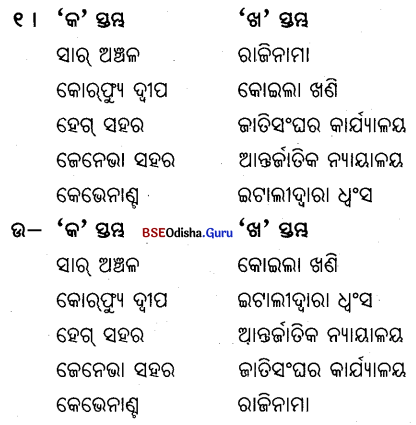
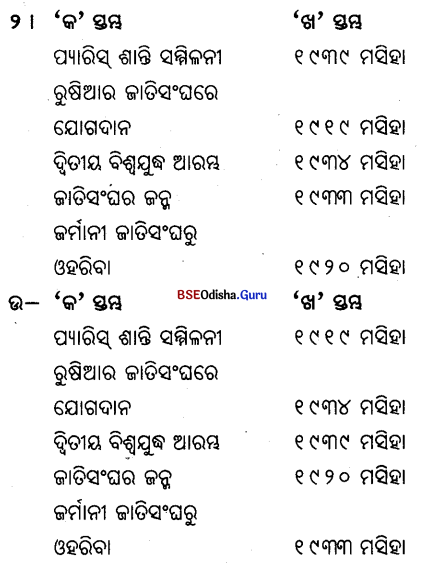
F ରେଖାଙ୍କିତ ପଦକୁ ପରିବର୍ତ୍ତନ କରି ଭ୍ରମ ସଂଶୋଧନ କର ।
୧। ଜାତିସଂଘର ଆନୁଷ୍ଠାନିକ ଭାବେ ଉଦ୍ଘାଟନ ୧୯୨୨ ମସିହାରେ ହୋଇଥିଲା ।
Answer:
୧୯୨୦
୨। ଆନ୍ତର୍ଜାତିକ ନ୍ୟାୟାଳୟ ନେଦରଲାଣ୍ଡର ନିଉୟର୍କ ସହରରେ ପ୍ରତିଷ୍ଠା କରାଯାଇଥିଲା ।
Answer:
ହେଗ୍
୩। ଅଧ୍ୟାସନ ପଦ୍ଧତିକୁ ଗ୍ୟାଣ୍ଡମ କୁହାଯାଏ ।
Answer:
ମାଣ୍ଡେଟ୍
![]()
୪। ସାଧାରଣ ସଭାର ବୈଠକୁ ବର୍ଷକୁ ଅନ୍ତତଃ ଦୁଇଥର ବସୁଥିଲା ।
Answer:
ଥରେ
୫। ଜାତିସଂଘର ସଚିବାଳୟରେ ୧୦ଟି ବିଭାଗ କାର୍ଯ୍ୟ କରୁଥିଲା ।
Answer:
୧୧ଟି
୬। ଉଡ୍ରୋ ଉଇଲସନ୍ ରୁଷିଆ ଦେଶର ରାଷ୍ଟ୍ରପତି ଥିଲେ ।
Answer:
ଆମେରିକା
୭ । ଇଂଲଣ୍ଡର ସାର୍ ଏରିକ୍ ଡ୍ୟାମଣ୍ଡ ଜାତିସଂଘର ଦ୍ଵିତୀୟ ସେକ୍ରେଟାରୀ ଜେନେରାଲ ଭାବେ ନିଯୁକ୍ତି ପାଇଥିଲେ ।
Answer:
ପ୍ରଥମ
୮। ଜାତି ସଂଘର ମୁଖ୍ୟ କାର୍ଯ୍ୟାଳୟ ଆମେରି କାର ଜେନେଭା ସହରରେ ଅବସ୍ଥିତ ଥିଲା ।
Answer:
ସୁଇଜରଲାଣ୍ଡ
୯। ୧୯୨୦ ମସିହାରେ ପୃଥିବୀରେ ଆର୍ଥିକ ମାନ୍ଦାବସ୍ଥା ଦେଖାଦେଇଥିଲା ।
Answer:
୧୯୩୦
୧୦ । ଇଟାଲୀ ଜାତିସଂଘର ସଭ୍ୟପଦ ୧୯୩୬ ମସିହାରେ ଛାଡ଼ିଥିଲା ।
Answer:
୧୯୩୭
G ଚାରୋଟି ସମ୍ଭାବ୍ୟ ବିକଳ୍ପ ମଧ୍ୟରୁ ସଠିକ୍ ଉତ୍ତରଟି ବାଛି ଲେଖ ।
1. ପ୍ରଥମ ସେକ୍ରେଟାରୀଭାବେ କିଏ ଜାତିସଂଘର ନିଯୁକ୍ତି ପାଇଥିଲେ ?
(A) ଆଭେନଲ୍
(B) ଏରିକ୍ ଡୁମଣ୍ଡ
(C) ଲେଷ୍ଟର
(D) ଉଇଲସନ୍
Answer:
(B) ଏରିକ୍ ଡୁମଣ୍ଡ
![]()
2. ଆନ୍ତର୍ଜାତିକ ନ୍ୟାୟାଳୟର ବିଚାରପତିମାନେ କେତେ ବର୍ଷ ପାଇଁ କାର୍ଯ୍ୟ କରିପାରୁଥିଲେ ?
(A) ୭
(B) ୮
(C) ୯
(D) ୧୦
Answer:
(C) ୯
3. ଜାତିସଂଘର ସଚିବାଳୟରେ ବିଭିନ୍ନ ଦେଶରୁ ପ୍ରାୟ କେତେ ଜଣ କାର୍ଯ୍ୟ କରିବାପାଇଁ ନିଯୁକ୍ତି ପାଇଥିଲେ ?
(A) ୬୫୦
(B) ୭୫୦
(C) ୮୫୦
(D) ୯୫୦
Answer:
(B) ୭୫୦
4. ୧୯୨୧ ମସିହାର କେଉଁ ମାସରେ ଆନ୍ତର୍ଜାତିକ ବିଚାର ପତି ମାନେ ନିର୍ବାଚିତ ନିର୍ବାଚିତ ହୋଇଥିଲେ ?
(A) ମାର୍ଚ୍ଚ
(B) ଏପ୍ରିଲ
(C) ସେପ୍ଟେମ୍ବର
(D) ଅକ୍ଟୋବର
Answer:
(C) ସେପ୍ଟେମ୍ବର
5. ପୋଲାଣ୍ଡ ଓ ଚେକୋସ୍ଲୋଭାକିଆ ମଧ୍ୟରେ ଥିବା ସୀମା ବିବାଦକୁ କେବେ ଶାନ୍ତିପୂର୍ଣ୍ଣ ଭାବେ ଏକ କମିଶନ ଜରିଆରେ ସମାଧାନ କରାଯାଇଥିଲା ?
(A) ୧୯୨୦
(B) ୧୯୨୧
(C) ୧୯୨୨
(D) ୧୯୨୩
Answer:
(C) ୧୯୨୨
![]()
6. ଗ୍ରୀସ୍ ଓ ବୁଲଗେରିଆର ସୀମା ବିବାଦ ପ୍ରସଙ୍ଗରେ ବୁଲଗେରିଆରେ ମୃତୟନ ଥିବା ଗ୍ରୀସ୍ ସୈନ୍ୟମାନଙ୍କୁ କେବେ ପ୍ରତ୍ୟାହାର କରାଯାଇଥିଲା ?
(A) ୧୯୨୪
(B) ୧୯୨୫
(C) ୧୯୨୬
(D) ୧୯୨୭
Answer:
(B) ୧୯୨୫
7.ଜାପାନ ଚୀନ୍ର କେଉଁ ଅଞ୍ଚଳକୁ ଦଖଲ କରିଥିଲା ?
(A) ବେଜିଂ
(B) ମାଞ୍ଚୁରିଆ
(C) ଆବିସିନିଆ
(D) ଫରିଦ୍
Answer:
(B) ମାଞ୍ଚୁରିଆ
8. ୧୯୩୯ ମସିହାରେ ଫିନଲାଣ୍ଡକୁ ଆକ୍ରମଣ କରିବାରୁ କେଉଁ ଦେଶକୁ ଜାତିସଂଘ ସଦସ୍ୟ ପଦରୁ ବହିଷ୍କାର କରିଥିଲା ?
(A) ଇଟାଲୀ
(B) ଆମେରିକା
(C) ରୁଷିଆ
(D) ଜାପାନ
Answer:
(C) ରୁଷିଆ
୨. କେଉଁ ମସିହାର ଆର୍ଥିକ ମାନ୍ଦାବସ୍ଥା ବିଶ୍ବ ଅର୍ଥନୀତିକୁ ଭଙ୍ଗ କରି ଦେଇଥିଲା ?
(A) ୧୯୨୯
(B) ୧୯୩୦
(C) ୧୯୩୧
(D) ୧୯୩୨
Answer:
(B) ୧୯୩୦
10. ନିମ୍ନୋକ୍ତ କେଉଁ ଦେଶରେ ସାମରିକବାଦ ଦେଖାଯାଇ ନଥୁଲା ?
(A) ରୁଷ୍
(B) ଜର୍ମାନୀ
(C) ଜାପାନ
(D) ବୁଲଗେରିଆ
Answer:
(C) ଜାପାନ
11. ଜର୍ମାନୀରେ କେଉଁ ବାଦର ଉତ୍ଥାନ ହୋଇଥିଲା ?
(A) ଫାସୀବାଦ
(B) ନାଜୀବାଦ
(C) ସାମରିକବାଦ
(D) ମାନବବାଦ
Answer:
(B) ନାଜୀବାଦ
12. କେବେ ପ୍ୟାରିସ୍ତାରେ ଏକ ଶାନ୍ତ ସମ୍ମିଳନୀ ଆହୂତ ହୋଇଥିଲା ?
(A) ୧୯୧୮
(B) ୧୯୧୯
(C) ୧୯୨୦
(D) ୧୯୨୧
Answer:
(B) ୧୯୧୯
![]()
13. ଜାତିସଂଘର ପରିଷଦରେ କେତେ ଜଣ ଅସ୍ଥାୟୀ ସଭ୍ୟ ଥିଲେ ?
(A) ୨ ଜଣ
(B) ୪ ଜଣ
(C) ୩ ଜଣ
(D) ୫ ଜଣ
Answer:
(B) ୪ ଜଣ
14. କେତୋଟି ରାଷ୍ଟ୍ର ଜାତିସଂଘର ମୂଳ ସଦସ୍ୟ ଥିଲେ ?
(A) ୪୦
(B) ୪୧
(C) ୪୨
(D) ୪୩
Answer:
(D) ୪୩
15. ରୁଷିଆ କେବେ ଜାତିସଂଘରେ ଯୋଗ ଦେଇଥିଲା ?
(A) ୧୯୨୬
(B) ୧୯୩୦
(C) ୧୯୩୪
(D) ୧୯୩୯
Answer:
(C) ୧୯୩୪
16. କିଏ ପ୍ୟାରିସ୍ ସମ୍ମିଳନୀରେ ଜାତିସଂଘ ଗଠନ ପାଇଁ ପ୍ରସ୍ତାବ ଦେଇଥିଲେ ?
(A) ଆଭେନଲ୍
(B) ଲେଷ୍ଟର
(C) ଉଡ୍ରୋ ଉଇଲ୍ସନ୍
(D) ଏରିକ୍ ଡୁମଣ୍ଡ
Answer:
(C) ଉଡ୍ରୋ ଉଇଲ୍ସନ୍
17. ନୂତନ ରାଷ୍ଟ୍ରକୁ ସଭ୍ୟପଦ ଦେବାପାଇଁ ଜାତିସଂଘର ‘ସଭା’ର ଅତିକମ୍ରେ କେତେ ସଭ୍ୟଙ୍କ ସମର୍ଥନ ଆବଶ୍ୟକ ଥିଲା ?
(A) ଏକ ତୃତୀୟାଂଶ
(B) ଏକ ଚତୁର୍ଥାଂଶ
(C) ଦୁଇ ତୃତୀୟାଂଶ
(D) ତିନି ଚତୁର୍ଥାଂଶ
Answer:
(C) ଦୁଇ ତୃତୀୟାଂଶ
18. ଆନ୍ତର୍ଜାତିକ ଶ୍ରମ ସଙ୍ଗଠନର ଶାସନ ନିୟନ୍ତ୍ରକ ଦଳରେ କେତେ ଜଣ ସଦସ୍ୟ ରହିଥିଲେ ?
(A) ଚାରିଜଣ
(B) ଆଠଜଣ
(C) ଷୋହଳ ଜଣ
(D) ବତ୍ରିଶ ଜଣ
Answer:
(D) ବତ୍ରିଶ ଜଣ
19. ଜର୍ମାନୀ କେବେ ଜାତିସଂଘର ସଦସ୍ୟ ପଦତ୍ୟାଗ କଲା ?
(A) ୧୯୨୬ ମସିହା
(B) ୧୯୩୩ ମସିହା
(C) ୧୯୩୪ ମସିହା
(D) ୧୯୩୭ ମସିହା
Answer:
(B) ୧୯୩୩ ମସିହା
20. ଇଟାଲୀ କେଉଁ ମସିହାରେ ଜାତିସଂଘର ସଦସ୍ୟପଦ ଛାଡ଼ିଥିଲା ?
(A) ୧୯୨୬
(B) ୧୯୩୩
(C) ୧୯୩୪
(D) ୧୯୩୭
Answer:
(D) ୧୯୩୭
![]()
21. କଲମ୍ବିଆକୁ ହସ୍ତାନ୍ତର କରିଥିବା କେଉଁ ସହରକୁ ପେରୁ ୧୯୩୩ରେ ପୁନଃ ଅଧିକାର କରିଥିଲା ?
(A) ଡାଗ୍
(B) ଆଲାଣ୍ଡ
(C) ହେଗ୍
(D) ଲେଟିସିଆ
Answer:
(D) ଲେଟିସିଆ


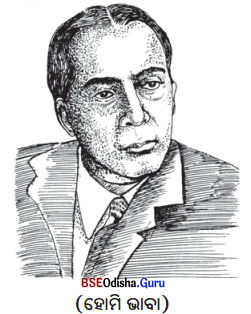
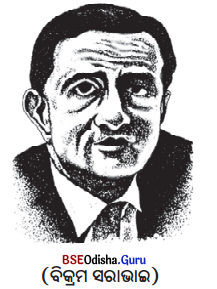


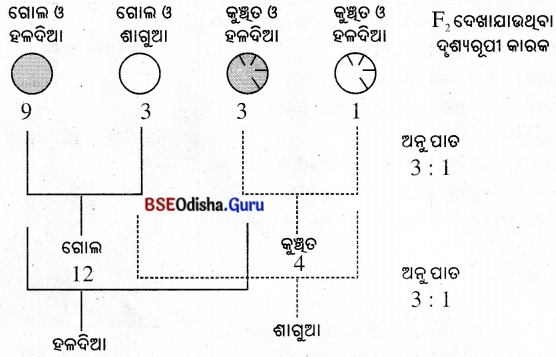
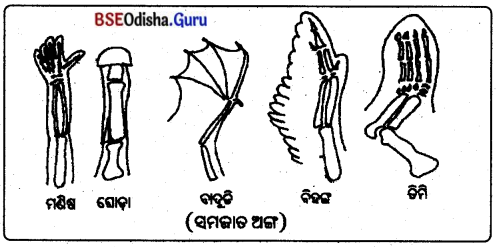
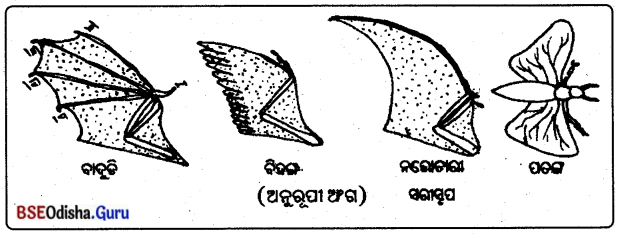
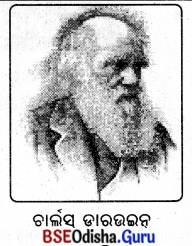
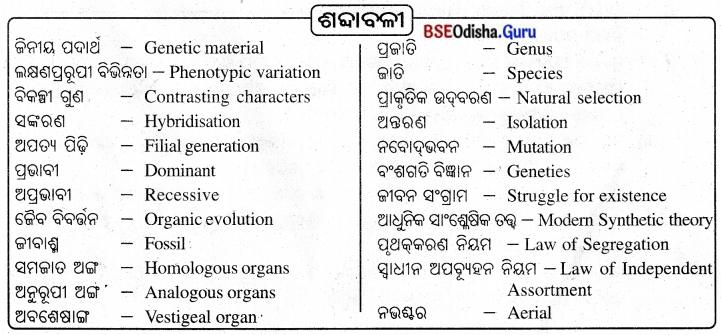
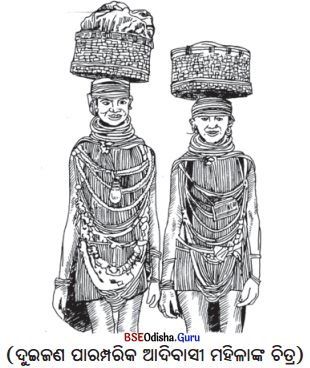
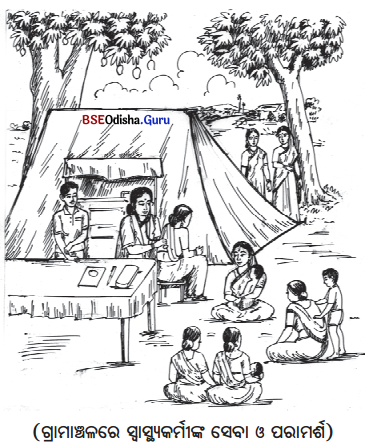

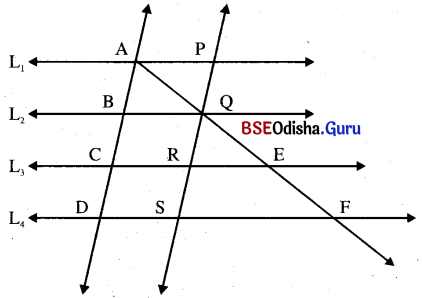
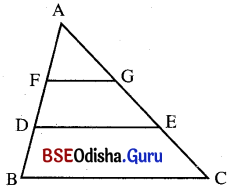
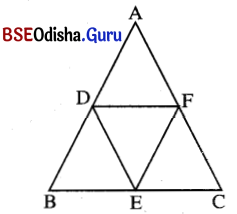
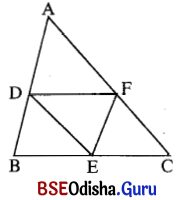
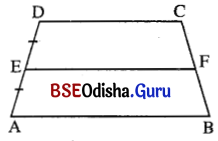
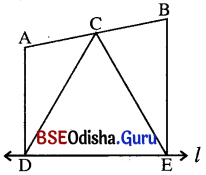
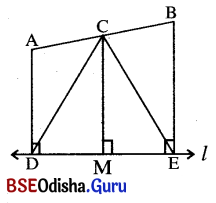
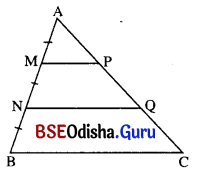
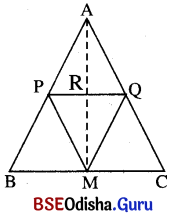

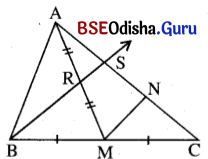
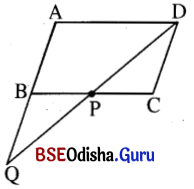
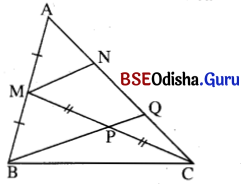
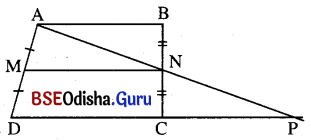

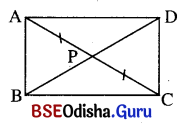
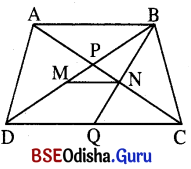
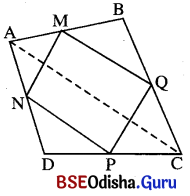
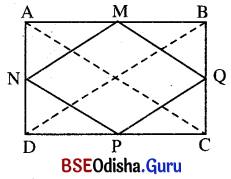
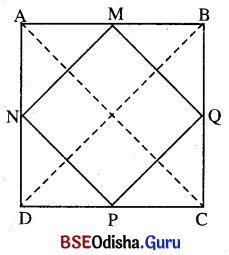
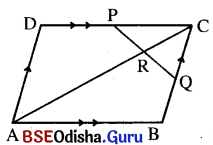
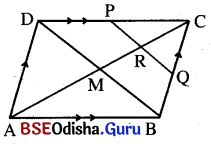 (ପ୍ରମାଣିତ)
(ପ୍ରମାଣିତ)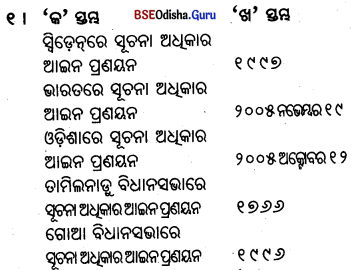
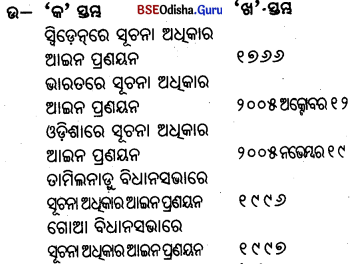
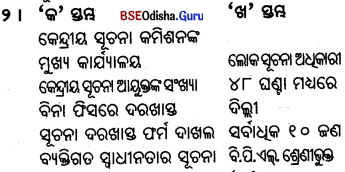
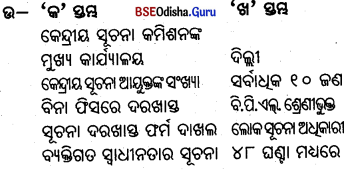

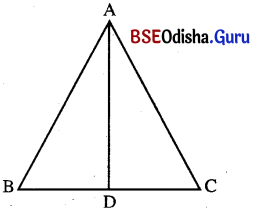

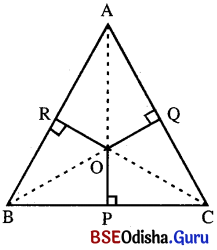
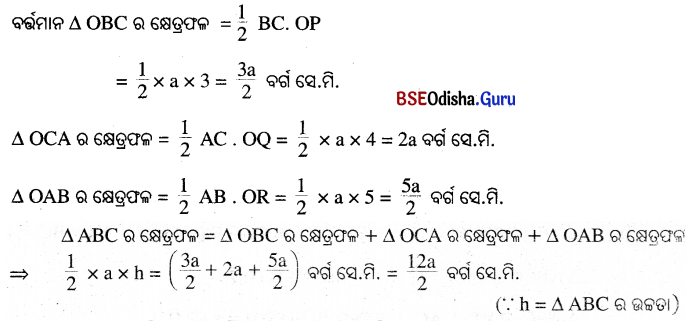
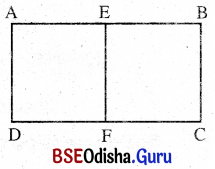

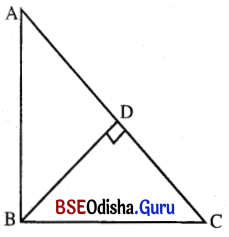
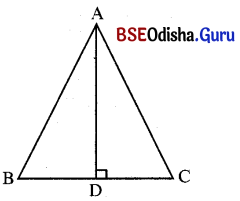

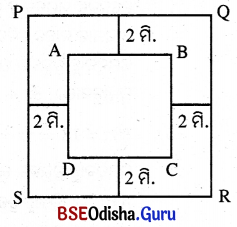
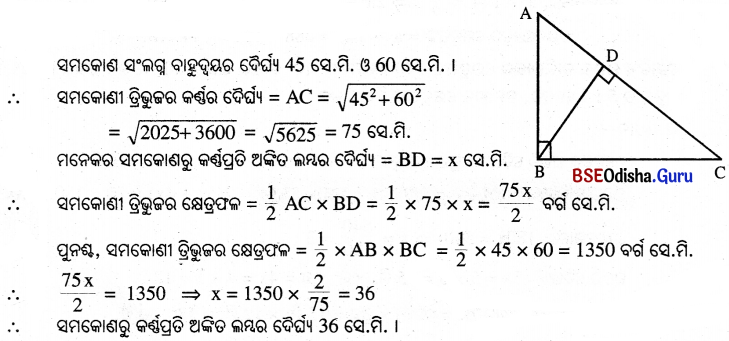
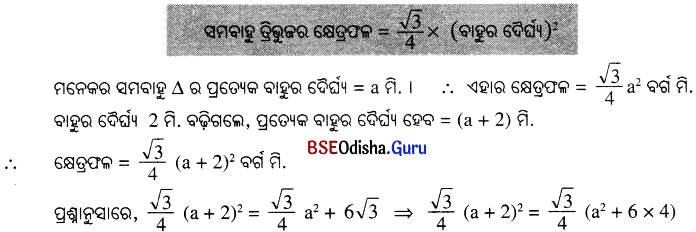

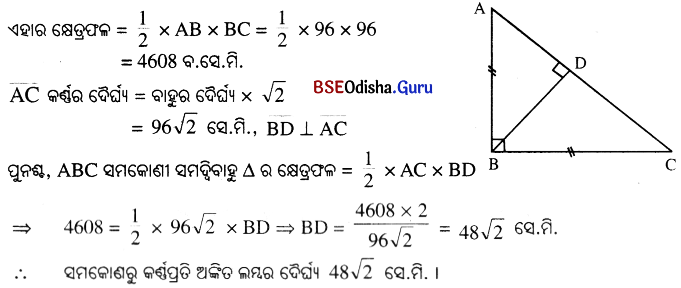
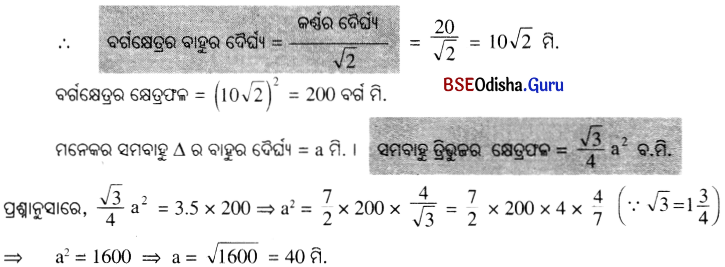
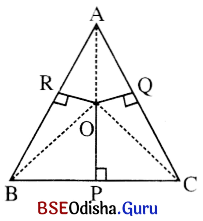

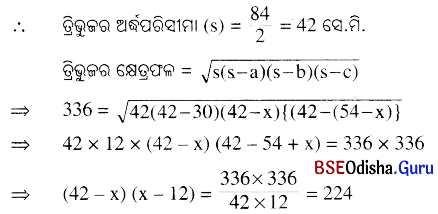
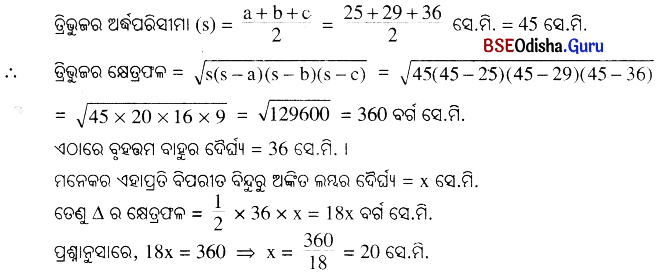

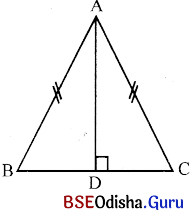





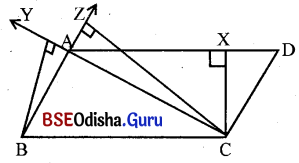
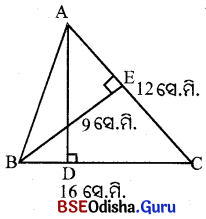
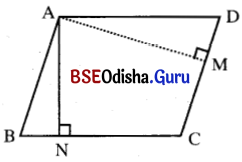
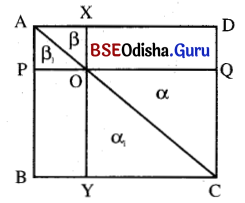

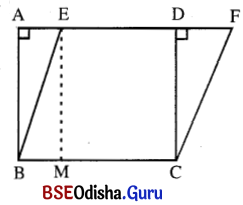 (ପ୍ରମାଣିତ)
(ପ୍ରମାଣିତ)
